AMD A6-9220C vs Intel Core i3-7020U: What is the difference?
39points
AMD A6-9220C
44points
Intel Core i3-7020U
Comparison winner
vs
64 facts in comparison
AMD A6-9220C
Intel Core i3-7020U
Why is AMD A6-9220C better than Intel Core i3-7020U?
- 420MHz faster GPU clock speed?
720MHzvs300MHz - 0.5MB bigger L2 cache?
1MBvs0.5MB - 9W lower TDP?
6Wvs15W - 32KB bigger L1 cache?
160KBvs128KB - 0.25MB/core more L2 cache per core?
0.5MB/corevs0.25MB/core
Why is Intel Core i3-7020U better than AMD A6-9220C?
- 27.78% faster CPU speed?
2 x 2.3GHzvs2 x 1.8GHz - 267MHz higher ram speed?
2133MHzvs1866MHz - 2 more CPU threads?
4vs2 - 10°C higher maximum operating temperature?
100°Cvs90°C - 14nm smaller semiconductor size?
14nmvs28nm - 20.
19GB/s more memory bandwidth?
34.1GB/svs13.91GB/s - 1 more memory channels?
2vs1 - Uses multithreading?
Which are the most popular comparisons?
AMD A6-9220C
vs
Intel Celeron N4020
Intel Core i3-7020U
vs
Intel Celeron N4020
AMD A6-9220C
vs
Intel Core i5-8265U
Intel Core i3-7020U
vs
AMD 3020e
AMD A6-9220C
vs
AMD 3020e
Intel Core i3-7020U
vs
AMD Ryzen 3 2200U
AMD A6-9220C
vs
Intel Celeron N4000
Intel Core i3-7020U
vs
AMD A4-9125
AMD A6-9220C
vs
Intel Core i5-8250U
Intel Core i3-7020U
vs
AMD A9-9425
AMD A6-9220C
vs
Intel Celeron N3350
Intel Core i3-7020U
vs
Intel Celeron N4120
AMD A6-9220C
vs
AMD A9-9425
Intel Core i3-7020U
vs
Intel Pentium Gold 5405U
AMD A6-9220C
vs
Intel Core i3-1115G4
Intel Core i3-7020U
vs
AMD Athlon 300U
AMD A6-9220C
vs
AMD A4-9125
Intel Core i3-7020U
vs
AMD A6-9225
Intel Core i3-7020U
vs
Intel Core i3-1115G4
Price comparison
User reviews
Overall Rating
AMD A6-9220C
0 User reviews
AMD A6-9220C
0. 0/10
0/10
0 User reviews
Intel Core i3-7020U
4 User reviews
Intel Core i3-7020U
8.0/10
4 User reviews
Features
Value for money
No reviews yet
5.8/10
4 votes
Gaming
No reviews yet
5.8/10
4 votes
Performance
No reviews yet
7.5/10
4 votes
Reliability
No reviews yet
8.0/10
4 votes
Energy efficiency
No reviews yet
8.8/10
4 votes
Performance
1.CPU speed
2 x 1.8GHz
2 x 2.3GHz
The CPU speed indicates how many processing cycles per second can be executed by a CPU, considering all of its cores (processing units). It is calculated by adding the clock rates of each core or, in the case of multi-core processors employing different microarchitectures, of each group of cores.
2. CPU threads
CPU threads
More threads result in faster performance and better multitasking.
3.turbo clock speed
2.7GHz
Unknown. Help us by suggesting a value. (Intel Core i3-7020U)
When the CPU is running below its limitations, it can boost to a higher clock speed in order to give increased performance.
4.Has an unlocked multiplier
✖AMD A6-9220C
✖Intel Core i3-7020U
Some processors come with an unlocked multiplier which makes them easy to overclock, allowing you to gain increased performance in games and other apps.
5.L2 cache
A larger L2 cache results in faster CPU and system-wide performance.
6.L3 cache
Unknown. Help us by suggesting a value. (AMD A6-9220C)
A larger L3 cache results in faster CPU and system-wide performance.
7.L1 cache
A larger L1 cache results in faster CPU and system-wide performance.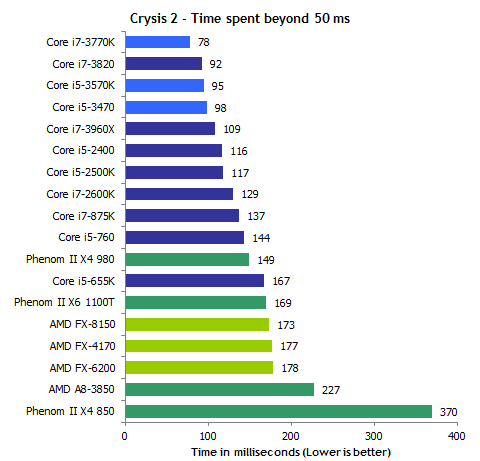
8.L2 core
0.5MB/core
0.25MB/core
More data can be stored in the L2 cache for access by each core of the CPU.
9.L3 core
Unknown. Help us by suggesting a value. (AMD A6-9220C)
1.5MB/core
More data can be stored in the L3 cache for access by each core of the CPU.
Memory
1.RAM speed
1866MHz
2133MHz
It can support faster memory, which will give quicker system performance.
2.maximum memory bandwidth
13.91GB/s
34.1GB/s
This is the maximum rate that data can be read from or stored into memory.
3.DDR memory version
Unknown. Help us by suggesting a value. (AMD A6-9220C)
DDR (Double Data Rate) memory is the most common type of RAM. Newer versions of DDR memory support higher maximum speeds and are more energy-efficient.
4. memory channels
memory channels
More memory channels increases the speed of data transfer between the memory and the CPU.
5.maximum memory amount
Unknown. Help us by suggesting a value. (AMD A6-9220C)
The maximum amount of memory (RAM) supported.
6.bus transfer rate
Unknown. Help us by suggesting a value. (AMD A6-9220C)
The bus is responsible for transferring data between different components of a computer or device.
7.Supports ECC memory
✖AMD A6-9220C
✖Intel Core i3-7020U
Error-correcting code memory can detect and correct data corruption. It is used when is it essential to avoid corruption, such as scientific computing or when running a server.
8.eMMC version
Unknown. Help us by suggesting a value. (AMD A6-9220C)
Unknown. Help us by suggesting a value. (Intel Core i3-7020U)
A higher version of eMMC allows faster memory interfaces, having a positive effect on the performance of a device.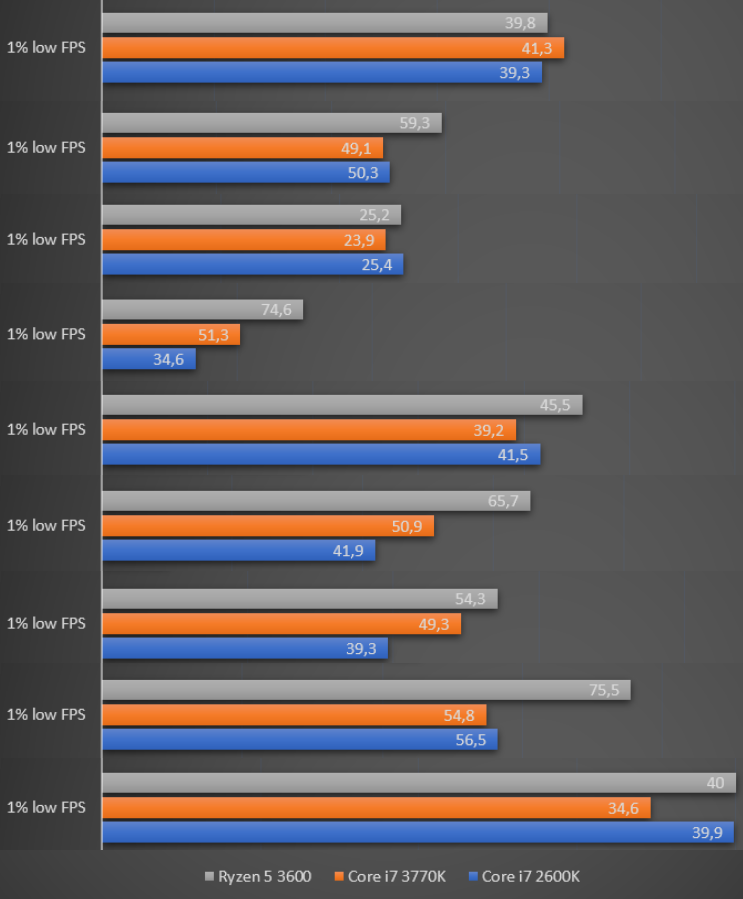 For example, when transferring files from your computer to the internal storage over USB.
For example, when transferring files from your computer to the internal storage over USB.
9.bus speed
Unknown. Help us by suggesting a value. (AMD A6-9220C)
Unknown. Help us by suggesting a value. (Intel Core i3-7020U)
The bus is responsible for transferring data between different components of a computer or device.
Benchmarks
1.PassMark result
Unknown. Help us by suggesting a value. (AMD A6-9220C)
This benchmark measures the performance of the CPU using multiple threads.
2.PassMark result (single)
Unknown. Help us by suggesting a value. (AMD A6-9220C)
This benchmark measures the performance of the CPU using a single thread.
3.Geekbench 5 result (multi)
Unknown. Help us by suggesting a value. (AMD A6-9220C)
Geekbench 5 is a cross-platform benchmark that measures a processor’s multi-core performance. (Source: Primate Labs, 2022)
(Source: Primate Labs, 2022)
4.Cinebench R20 (multi) result
Unknown. Help us by suggesting a value. (AMD A6-9220C)
Unknown. Help us by suggesting a value. (Intel Core i3-7020U)
Cinebench R20 is a benchmark tool that measures a CPU’s multi-core performance by rendering a 3D scene.
5.Cinebench R20 (single) result
Unknown. Help us by suggesting a value. (AMD A6-9220C)
Unknown. Help us by suggesting a value. (Intel Core i3-7020U)
Cinebench R20 is a benchmark tool that measures a CPU’s single-core performance by rendering a 3D scene.
6.Geekbench 5 result (single)
Unknown. Help us by suggesting a value. (AMD A6-9220C)
Geekbench 5 is a cross-platform benchmark that measures a processor’s single-core performance. (Source: Primate Labs, 2022)
7.Blender (bmw27) result
Unknown. Help us by suggesting a value. (AMD A6-9220C)
(AMD A6-9220C)
Unknown. Help us by suggesting a value. (Intel Core i3-7020U)
The Blender (bmw27) benchmark measures the performance of a processor by rendering a 3D scene. More powerful processors can render the scene in less time.
8.Blender (classroom) result
Unknown. Help us by suggesting a value. (AMD A6-9220C)
Unknown. Help us by suggesting a value. (Intel Core i3-7020U)
The Blender (classroom) benchmark measures the performance of a processor by rendering a 3D scene. More powerful processors can render the scene in less time.
9.performance per watt
Unknown. Help us by suggesting a value. (AMD A6-9220C)
This means the CPU is more efficient, giving a greater amount of performance for each watt of power used.
Features
1.uses multithreading
✖AMD A6-9220C
✔Intel Core i3-7020U
Multithreading technology (such as Intel’s Hyperthreading or AMD’s Simultaneous Multithreading) provides increased performance by splitting each of the processor’s physical cores into virtual cores, also known as threads. This way, each core can run two instruction streams at once.
This way, each core can run two instruction streams at once.
2.Has AES
✔AMD A6-9220C
✔Intel Core i3-7020U
AES is used to speed up encryption and decryption.
3.Has AVX
✔AMD A6-9220C
✔Intel Core i3-7020U
AVX is used to help speed up calculations in multimedia, scientific and financial apps, as well as improving Linux RAID software performance.
4.SSE version
SSE is used to speed up multimedia tasks such as editing an image or adjusting audio volume. Each new version contains new instructions and improvements.
5.Has F16C
✔AMD A6-9220C
✔Intel Core i3-7020U
F16C is used to speed up tasks such as adjusting the contrast of an image or adjusting volume.
6.bits executed at a time
Unknown. Help us by suggesting a value. (AMD A6-9220C)
Unknown. Help us by suggesting a value. (Intel Core i3-7020U)
Help us by suggesting a value. (Intel Core i3-7020U)
NEON provides acceleration for media processing, such as listening to MP3s.
7.Has MMX
✔AMD A6-9220C
✔Intel Core i3-7020U
MMX is used to speed up tasks such as adjusting the contrast of an image or adjusting volume.
8.Has TrustZone
✖AMD A6-9220C
✖Intel Core i3-7020U
A technology integrated into the processor to secure the device for use with features such as mobile payments and streaming video using digital rights management (DRM).
9.front-end width
Unknown. Help us by suggesting a value. (AMD A6-9220C)
Unknown. Help us by suggesting a value. (Intel Core i3-7020U)
The CPU can decode more instructions per clock (IPC), meaning that the CPU performs better
Price comparison
Cancel
Which are the best CPUs?
AMD A6-9220 vs Intel Core i3-1005G1 tests and benchmarks
Overall score
Released
Q2/2017
Released
Q3/2019
Overall score
Comparison of AMD A6-9220 and Intel Core i3-1005G1 processors by specifications and benchmarks.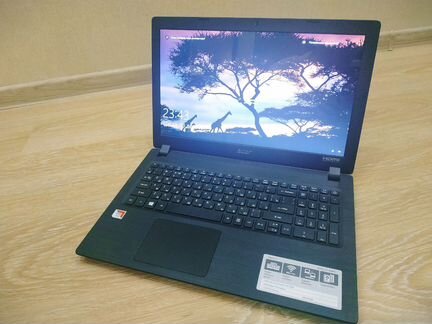 AMD A6-9220 runs at base clock 2.50 GHz and has 2 threads, and Intel Core i3-1005G1 runs at base clock 1.20 GHz and has 4 threads. The architecture and type of processors is different, Stoney Ridge (Excavator) Mobile versus Ice Lake U Mobile. The TDP of the first processor is 15 W, and the second one is 15 W. Compare test scores to see which processor is better.
AMD A6-9220 runs at base clock 2.50 GHz and has 2 threads, and Intel Core i3-1005G1 runs at base clock 1.20 GHz and has 4 threads. The architecture and type of processors is different, Stoney Ridge (Excavator) Mobile versus Ice Lake U Mobile. The TDP of the first processor is 15 W, and the second one is 15 W. Compare test scores to see which processor is better.
AMD A6-9220
Check price at Amazon
Check price at Ebay
Check price at AliExpress
Intel Core i3-1005G1
Check price at Amazon
Check price at Ebay
Check price at AliExpress
Differences
Performance tests
Specifications
Comments
Differences
Reasons to consider
AMD A6-9220
Report a bug
Reasons to consider
Intel Core i3-1005G1
Report a bug
-
Higher turbo clock speed3.
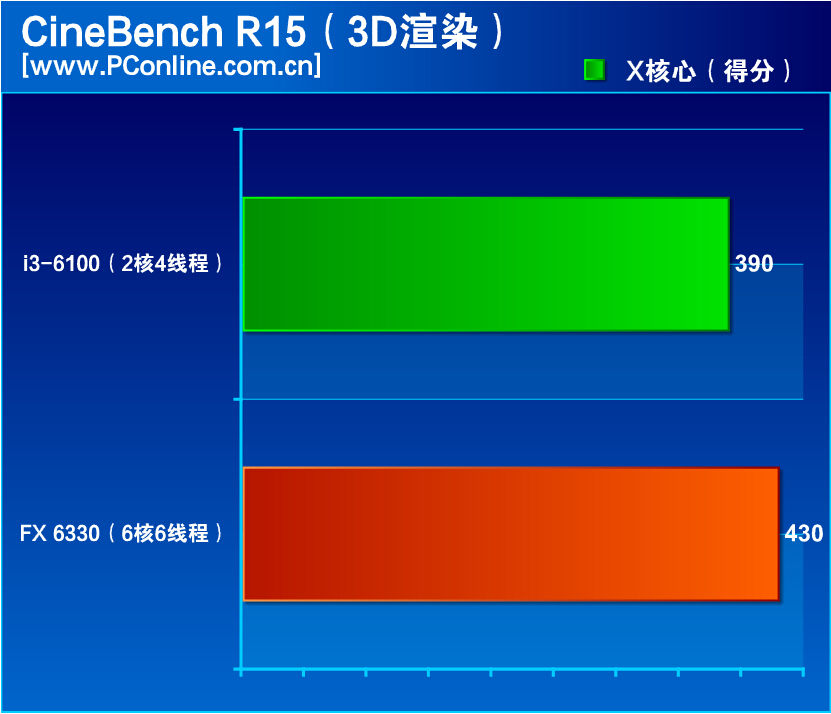 40 GHz 2.90 GHz
40 GHz 2.90 GHz
Around 15 % better overclocked clock speed
Performance tests
Real tests AMD A6-9220 vs Intel Core i3-1005G1
Cinebench R15 (Single-Core)
Cinebench R15 is the successor of Cinebench 11
AMD A6-9220
69
Intel Core i3-1005G1
158
Cinebench R15 (Multi-Core)
Cinebench R15 is the successor of Cinebench 11
AMD A6-9220
112
Intel Core i3-1005G1
409
iGPU — FP32 Performance (Single-precision GFLOPS)
The theoretical computing performance of the internal graphics unit of the processor with simple accuracy (32 bit) in GFLOPS
AMD A6-9220
251
Intel Core i3-1005G1
922
Estimated results for PassMark CPU Mark
Some of the CPUs listed below have been benchmarked by CPU-monkey
AMD A6-9220
2158
Intel Core i3-1005G1
5929
Specifications
Complete list of technical specifications
AMD A6-9220
Intel Core i3-1005G1
CPU generation and family
description_compare AMD A6-9220 and Intel Core i3-1005G1
CPU Cores and Base Frequency
-
Frequency2.
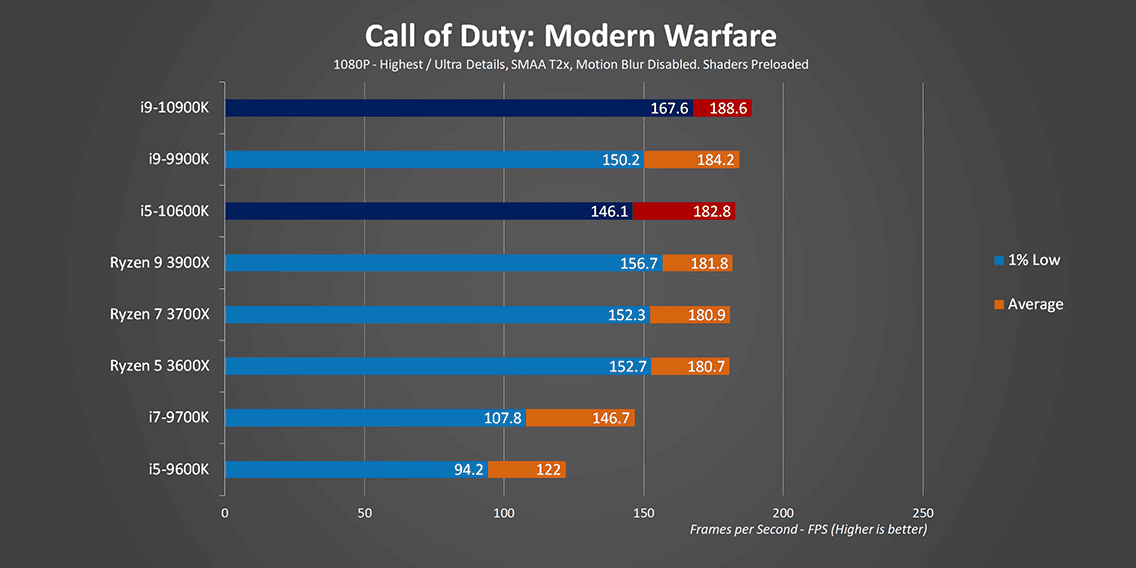 50 GHz 1.20 GHz
50 GHz 1.20 GHz -
CPU Cores2 2
-
Turbo (1 Core)2.90 GHz 3.
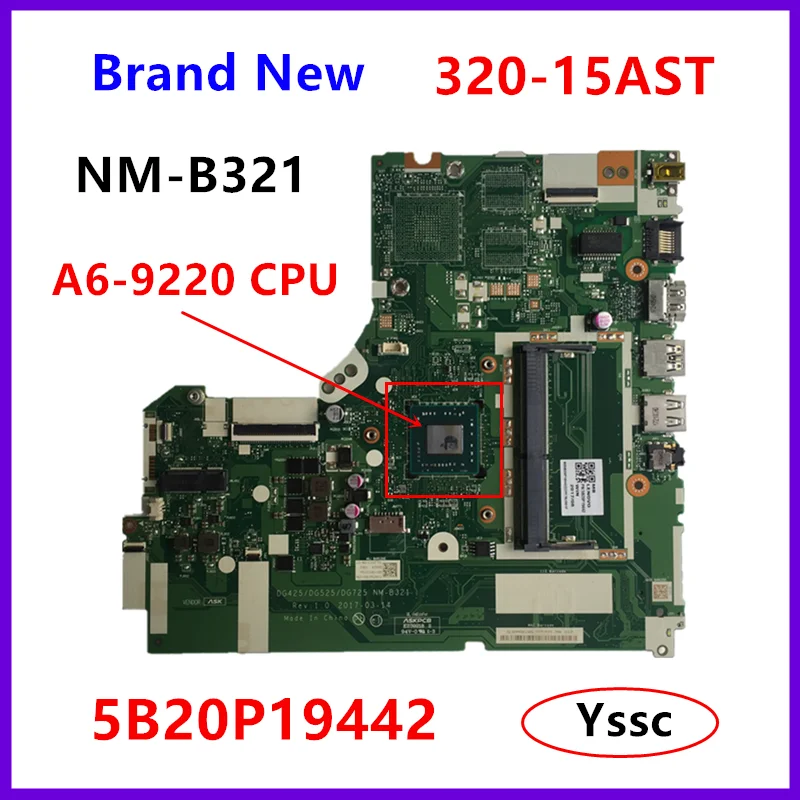 40 GHz
40 GHz -
CPU Threads2 4
-
Turbo (2 Cores)2.70 GHz 3.40 GHz
-
HyperthreadingNo Yes
-
OverclockingNo No
-
Core architecturenormal normal
Internal Graphics
Hardware codec support
-
h365 / HEVC (8 bit)Decode Decode / Encode
-
h365 / HEVC (10 bit)Decode Decode / Encode
-
h364Decode Decode / Encode
-
VP9Decode Decode / Encode
-
VP8Decode Decode / Encode
-
AV1No No
-
AVCDecode / Encode Decode / Encode
-
VC-1Decode Decode
-
JPEGDecode / Encode Decode / Encode
Memory & PCIe
Encryption
-
AES-NIYes Yes
Thermal Management
-
TDP (PL1)15 W 15 W
-
TDP down10 W 13 W
-
Tjunction max.
90 °C 100 °C
Technical details
-
Instruction set (ISA)x86-64 (64 bit) x86-64 (64 bit)
-
VirtualizationAMD-V VT-x, VT-x EPT, VT-d
-
ISA extensionsSSE4a, SSE4.
1, SSE4.2, AVX, FMA3, FMA4 SSE4.1, SSE4.2, AVX2
-
L3-Cache2.00 MB 4.00 MB
-
ArchitectureStoney Ridge (Excavator) Ice Lake U
-
Technology28 nm 10 nm
-
SocketFP4 BGA 1526
-
Release dateQ2/2017 Q3/2019
Devices using this processor
Latest comparisons
AMD A6-9220
Intel Core i3-1005G1
Intel Pentium G4600T
Intel Xeon E3-1270 v6
AMD Ryzen 5 PRO 3400GE
Intel Xeon Platinum 9282
Intel Core i7-12700K
Intel Core i9-12900KF
Apple A15 Bionic
Intel Core i3-1110G4
Intel Core i5-11400H
Intel Core i7-1185G7
Intel Atom x5-Z8300
Intel Atom x5-Z8350
AMD Ryzen 5 5600H
Intel Core i7-1165G7
Intel Core i3-2348M
Intel Pentium B960
AMD Ryzen 9 5900HX
AMD Ryzen 5 4600HS
Intel Atom S1240
Intel Celeron G1840
AMD Epyc 7501
Intel Core i5-9500T
Intel Atom C3850
Intel Xeon Silver 4114T
AMD A6-3670K
Intel Core i3-2120T
Report a bugBug description
Source link
AMD A6-9220 vs Intel Core i3-4150
|
|
|
|
|
AMD A6-9220 vs Intel Core i3-4150
Comparison of the technical characteristics between the processors, with the AMD A6-9220 on one side and the Intel Core i3-4150 on the other side. The first is dedicated to the notebook sector, It has 2 cores, 2 threads, a maximum frequency of 2,9GHz. The second is used on the desktop segment, it has a total of 2 cores, 4 threads, its turbo frequency is set to 3,5 GHz. The following table also compares the lithography, the number of transistors (if indicated), the amount of cache memory, the maximum RAM memory capacity, the type of memory accepted, the release date, the maximum number of PCIe lanes, the values obtained in Geekbench 4 and Cinebench R15.
The first is dedicated to the notebook sector, It has 2 cores, 2 threads, a maximum frequency of 2,9GHz. The second is used on the desktop segment, it has a total of 2 cores, 4 threads, its turbo frequency is set to 3,5 GHz. The following table also compares the lithography, the number of transistors (if indicated), the amount of cache memory, the maximum RAM memory capacity, the type of memory accepted, the release date, the maximum number of PCIe lanes, the values obtained in Geekbench 4 and Cinebench R15.
Note: Commissions may be earned from the links above.
This page contains references to products from one or more of our advertisers. We may receive compensation when you click on links to those products. For an explanation of our advertising policy, please visit this page.
Specifications:
| Processor | AMD A6-9220 | Intel Core i3-4150 | ||||||
| Market (main) | Notebook | Desktop | ||||||
| ISA | x86-64 (64 bit) | x86-64 (64 bit) | ||||||
| Microarchitecture | Excavator | Haswell | ||||||
| Core name | Stoney Ridge | Haswell-DT | ||||||
| Family | A6-9000 | Core i3-4000 | ||||||
| Part number(s), S-Spec | AM9220AYN23AC | BX80646I34150, BXC80646I34150, CM8064601483643, CM8064601483607, SR1KP |
||||||
| Release date | Q2 2017 | Q2 2014 | ||||||
| Lithography | 28 nm | 22 nm | ||||||
| Transistors | 1. |
1.400.000.000 | ||||||
| Cores | 2 | 2 | ||||||
| Threads | 2 | 4 | ||||||
| Base frequency | 2,5 GHz | 3,5 GHz | ||||||
| Turbo frequency | 2,9 GHz | — | ||||||
| Cache memory | 1 MB | 3 MB | ||||||
| Max memory capacity | 8 GB | 32 GB | ||||||
| Memory types | DDR4-2133 | DDR3-1333/1600, DDR3L-1333/1600 |
||||||
| Max # of memory channels | 1 | 2 | ||||||
| Max memory bandwidth | 17,1 GB/s | 25,6 GB/s | ||||||
| Max PCIe lanes | 6 | 16 | ||||||
| TDP | 15 W | 54 W | ||||||
| Suggested PSU | — | 600W ATX Power Supply | ||||||
| GPU integrated graphics | AMD Radeon R4 Graphics (Stoney) | Intel HD Graphics 4400 | ||||||
| GPU cores | 3 | — | ||||||
| GPU execution units | — | 20 | ||||||
| GPU shading units | 192 | 160 | ||||||
| GPU base clock | 200 MHz | 350 MHz | ||||||
| GPU boost clock | 655 MHz | 1150 MHz | ||||||
| GPU FP32 floating point | 251,5 GFLOPS | 368 GFLOPS | ||||||
| Socket | BGA | LGA1150 | ||||||
| Compatible motherboard | — | Socket LGA 1150 Motherboard | ||||||
| Maximum temperature | 90°C | 72°C | ||||||
| CPU-Z single thread | 166 | 364 | ||||||
| CPU-Z multi thread | 284 | 964 | ||||||
| Cinebench R15 single thread | 68 | 127 | ||||||
| Cinebench R15 multi-thread | 110 | 341 | ||||||
| PassMark single thread | 1. 120 120 |
1.916 | ||||||
| PassMark CPU Mark | 1.252 | 3.334 | ||||||
| (Windows 64-bit) Geekbench 4 single core |
1.669 | 3.443 | ||||||
| (Windows 64-bit) Geekbench 4 multi-core |
2.490 | 6.901 | ||||||
| (SGEMM) GFLOPS performance |
29,22 GFLOPS | 111,7 GFLOPS | ||||||
| (Multi-core / watt performance) Performance / watt ratio |
166 pts / W | 128 pts / W | ||||||
| Amazon | ||||||||
| eBay |
Note: Commissions may be earned from the links above.
We can better compare what are the technical differences between the two processors.
Suggested PSU: We assume that we have An ATX computer case, a high end graphics card, 16GB RAM, a 512GB SSD, a 1TB HDD hard drive, a Blu-Ray drive. We will have to rely on a more powerful power supply if we want to have several graphics cards, several monitors, more memory, etc.
Price: For technical reasons, we cannot currently display a price less than 24 hours, or a real-time price. This is why we prefer for the moment not to show a price. You should refer to the respective online stores for the latest price, as well as availability.
We see that the two processors have an equivalent number of cores, the turbo frequency of Intel Core i3-4150 is bigger, that the PDT of AMD A6-9220 is lower. The AMD A6-9220 was designed earlier.
Performances :
Performance comparison between the two processors, for this we consider the results generated on benchmark software such as Geekbench 4.
| CPU-Z — Multi-thread & single thread score | |
|---|---|
| Intel Core i3-4150 |
364 964 |
| AMD A6-9220 |
166 284 |
In single core, the difference is 119%. In multi-core, the difference in terms of gap is 239%.
Note: Commissions may be earned from the links above. These scores are only an
average of the performances got with these processors, you may get different results.
CPU-Z is a system information software that provides the name of the processor, its model number, the codename, the cache levels, the package, the process. It can also gives data about the mainboard, the memory. It makes real time measurement, with finally a benchmark for the single thread, as well as for the multi thread.
| Cinebench R15 — Multi-thread & single thread score | |
|---|---|
| Intel Core i3-4150 |
127 341 |
| AMD A6-9220 |
68 110 |
In single core, the difference is 87%. In multi-core, the difference in terms of gap is 210%.
In multi-core, the difference in terms of gap is 210%.
Note: Commissions may be earned from the links above. These scores are only an
average of the performances got with these processors, you may get different results.
Cinebench R15 evaluates the performance of CPU calculations by restoring a photorealistic 3D scene. The scene has 2,000 objects, 300,000 polygons, uses sharp and fuzzy reflections, bright areas, shadows, procedural shaders, antialiasing, and so on. The faster the rendering of the scene is created, the more powerful the PC is, with a high number of points.
| PassMark — CPU Mark & single thread | |
|---|---|
| Intel Core i3-4150 |
1.916 3.334 |
| AMD A6-9220 |
1.120 1.252 |
In single core, the difference is 71%.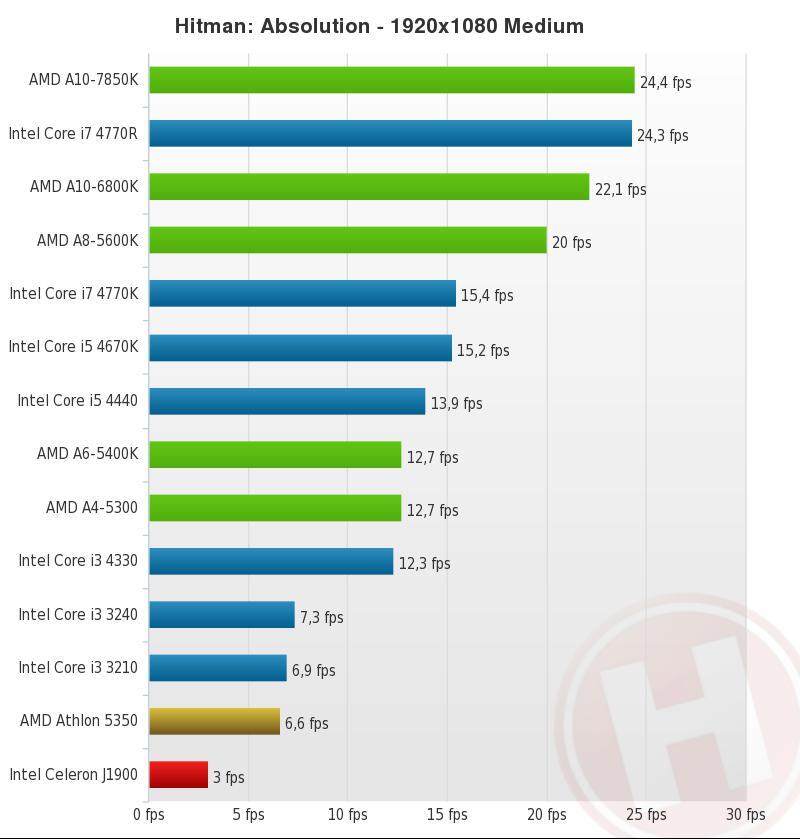 In multi-core, the difference in terms of gap is 166%.
In multi-core, the difference in terms of gap is 166%.
Note: Commissions may be earned from the links above. These scores are only an
average of the performances got with these processors, you may get different results.
PassMark is a benchmarking software that performs several performance tests including prime numbers, integers, floating point, compression, physics, extended instructions, encoding, sorting. The higher the score is, the higher is the device capacity.
On Windows 64-bit:
| Geekbench 4 — Multi-core & single core score — Windows 64-bit | |
|---|---|
| Intel Core i3-4150 |
3.443 6.901 |
| AMD A6-9220 |
1.669 2.490 |
In single core, the difference is 106%. In multi-core, the difference in terms of gap is 177%.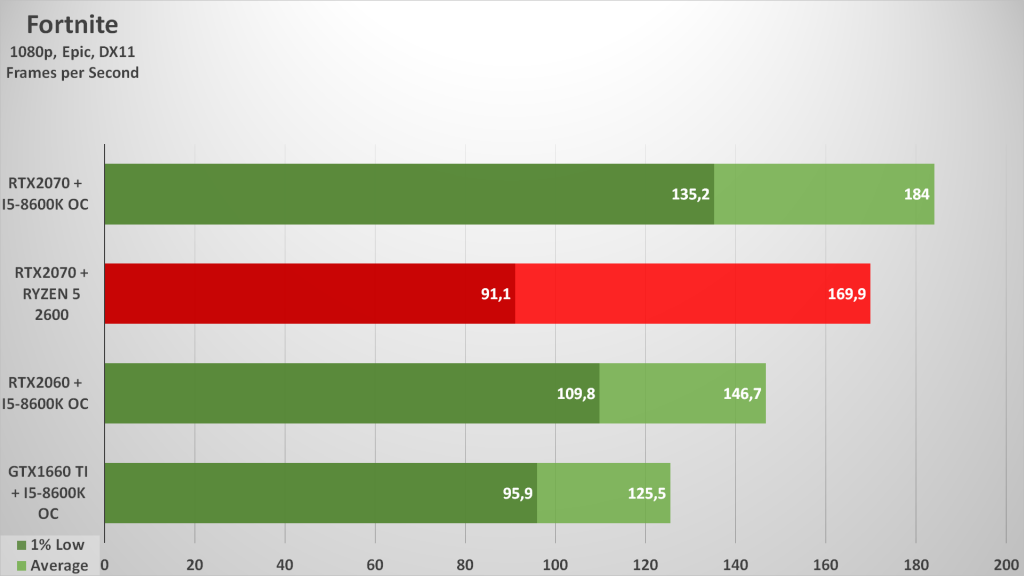
On Linux 64-bit:
| Geekbench 4 — Multi-core & single core score — Linux 64-bit | |
|---|---|
| Intel Core i3-4150 |
3.885 5.939 |
| AMD A6-9220 |
1.791 2.432 |
In single core, the difference is 117%. In multi-core, the difference in terms of gap is 144%.
On Android 64-bit:
| Geekbench 4 — Multi-core & single core score — Android 64-bit | |
|---|---|
| Intel Core i3-4150 |
3.626 4.873 |
| AMD A6-9220 |
2.081 3.127 |
In single core, the difference is 74%. In multi-core, the difference in terms of gap is 56%.
Note: Commissions may be earned from the links above.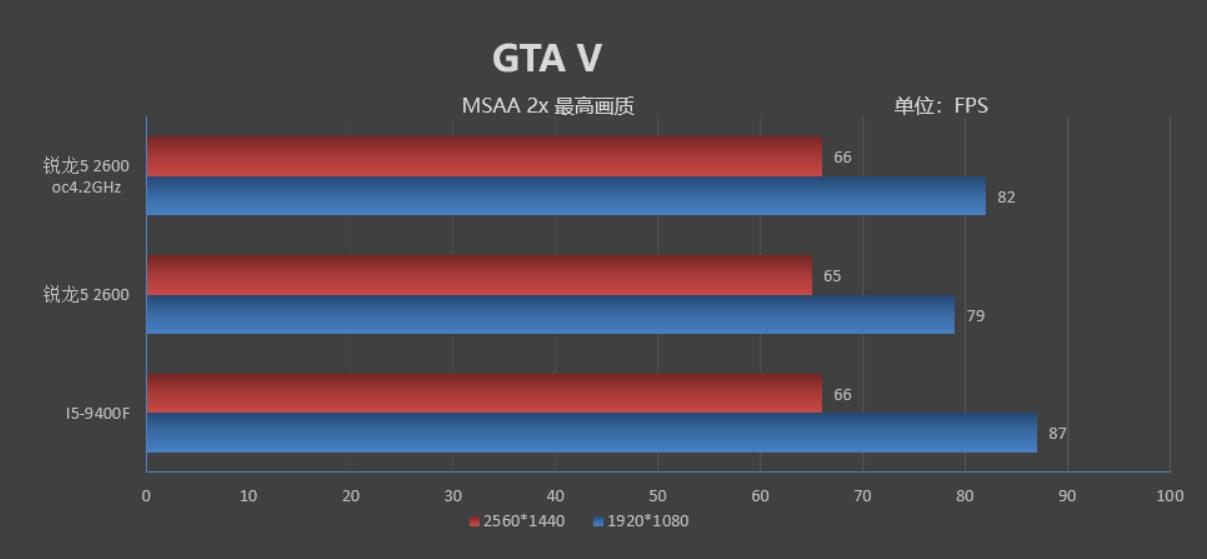 These scores are only an
These scores are only an
average of the performances got with these processors, you may get different results.
Geekbench 4 is a complete benchmark platform with several types of tests, including data compression, images, AES encryption, SQL encoding, HTML, PDF file rendering, matrix computation, Fast Fourier Transform, 3D object simulation, photo editing, memory testing. This allows us to better visualize the respective power of these devices. For each result, we took an average of 250 values on the famous benchmark software.
Equivalence:
AMD A6-9220 Intel equivalentIntel Core i3-4150 AMD equivalent
See also:
AMD A6-9220CAMD A6-9220eAMD A6-9225
Intel Core i3-4150T
Intel Core i3-4005U vs AMD A6-9220
|
|
|
|
|
Intel Core i3-4005U vs AMD A6-9220
Comparison of the technical characteristics between the processors, with the Intel Core i3-4005U on one side and the AMD A6-9220 on the other side.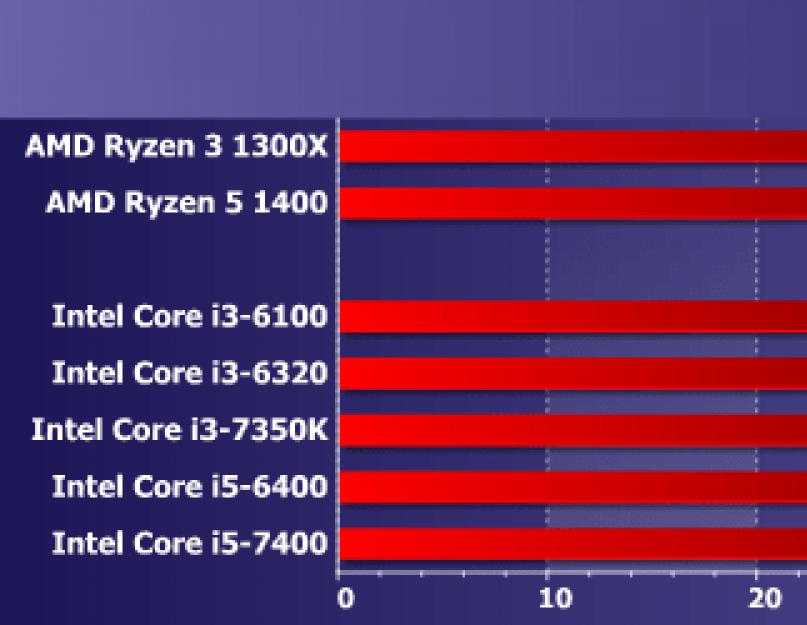 The first is dedicated to the ultrabook sector, It has 2 cores, 4 threads, a maximum frequency of 1,7GHz. The second is used on the notebook segment, it has a total of 2 cores, 2 threads, its turbo frequency is set to 2,9 GHz. The following table also compares the lithography, the number of transistors (if indicated), the amount of cache memory, the maximum RAM memory capacity, the type of memory accepted, the release date, the maximum number of PCIe lanes, the values obtained in Geekbench 4 and Cinebench R15.
The first is dedicated to the ultrabook sector, It has 2 cores, 4 threads, a maximum frequency of 1,7GHz. The second is used on the notebook segment, it has a total of 2 cores, 2 threads, its turbo frequency is set to 2,9 GHz. The following table also compares the lithography, the number of transistors (if indicated), the amount of cache memory, the maximum RAM memory capacity, the type of memory accepted, the release date, the maximum number of PCIe lanes, the values obtained in Geekbench 4 and Cinebench R15.
Note: Commissions may be earned from the links above.
This page contains references to products from one or more of our advertisers. We may receive compensation when you click on links to those products. For an explanation of our advertising policy, please visit this page.
Specifications:
| Processor | Intel Core i3-4005U | AMD A6-9220 | ||||||
| Market (main) | Ultrabook | Notebook | ||||||
| ISA | x86-64 (64 bit) | x86-64 (64 bit) | ||||||
| Microarchitecture | Haswell | Excavator | ||||||
| Core name | Haswell-ULT | Stoney Ridge | ||||||
| Family | Core i3-4000 | A6-9000 | ||||||
| Part number(s), S-Spec | CL8064701478404, SR1EK |
AM9220AYN23AC | ||||||
| Release date | Q3 2013 | Q2 2017 | ||||||
| Lithography | 22 nm | 28 nm | ||||||
| Transistors | 1. 400.000.000 400.000.000 |
1.200.000.000 | ||||||
| Cores | 2 | 2 | ||||||
| Threads | 4 | 2 | ||||||
| Base frequency | 1,7 GHz | 2,5 GHz | ||||||
| Turbo frequency | — | 2,9 GHz | ||||||
| Cache memory | 3 MB | 1 MB | ||||||
| Max memory capacity | 16 GB | 8 GB | ||||||
| Memory types | DDR3L 1333/1600, LPDDR 1333 /1600 |
DDR4-2133 | ||||||
| Max # of memory channels | 2 | 1 | ||||||
| Max memory bandwidth | 25,6 GB/s | 17,1 GB/s | ||||||
| Max PCIe lanes | 10 | 6 | ||||||
| TDP | 15 W | 15 W | ||||||
| GPU integrated graphics | Intel HD Graphics 4400 Mobile | AMD Radeon R4 Graphics (Stoney) | ||||||
| GPU cores | — | 3 | ||||||
| GPU execution units | 20 | — | ||||||
| GPU shading units | 160 | 192 | ||||||
| GPU base clock | 200 MHz | 200 MHz | ||||||
| GPU boost clock | 950 MHz | 655 MHz | ||||||
| GPU FP32 floating point | 304 GFLOPS | 251,5 GFLOPS | ||||||
| Socket | BGA1168 | BGA | ||||||
| Maximum temperature | 100°C | 90°C | ||||||
| CPU-Z single thread | 157 | 166 | ||||||
| CPU-Z multi thread | 443 | 284 | ||||||
| Cinebench R15 single thread | 68 | 68 | ||||||
| Cinebench R15 multi-thread | 164 | 110 | ||||||
| PassMark single thread | 895 | 1. 120 120 |
||||||
| PassMark CPU Mark | 1.625 | 1.252 | ||||||
| (Windows 64-bit) Geekbench 4 single core |
1.904 | 1.669 | ||||||
| (Windows 64-bit) Geekbench 4 multi-core |
3.571 | 2.490 | ||||||
| (Windows) Geekbench 5 single core |
369 | 339 | ||||||
| (Windows) Geekbench 5 multi-core |
869 | 548 | ||||||
| (SGEMM) GFLOPS performance |
39,02 GFLOPS | 29,22 GFLOPS | ||||||
| (Multi-core / watt performance) Performance / watt ratio |
238 pts / W | 166 pts / W | ||||||
| Amazon | ||||||||
| eBay |
Note: Commissions may be earned from the links above.
We can better compare what are the technical differences between the two processors.
Price: For technical reasons, we cannot currently display a price less than 24 hours, or a real-time price. This is why we prefer for the moment not to show a price. You should refer to the respective online stores for the latest price, as well as availability.
We see that the two processors have an equivalent number of cores, the turbo frequency of AMD A6-9220 is bigger, that their respective TDP are of the same order. The AMD A6-9220 was started more recently.
Performances :
Performance comparison between the two processors, for this we consider the results generated on benchmark software such as Geekbench 4.
| CPU-Z — Multi-thread & single thread score | |
|---|---|
| Intel Core i3-4005U |
157 443 |
| AMD A6-9220 |
166 284 |
In single core, the difference is -5%.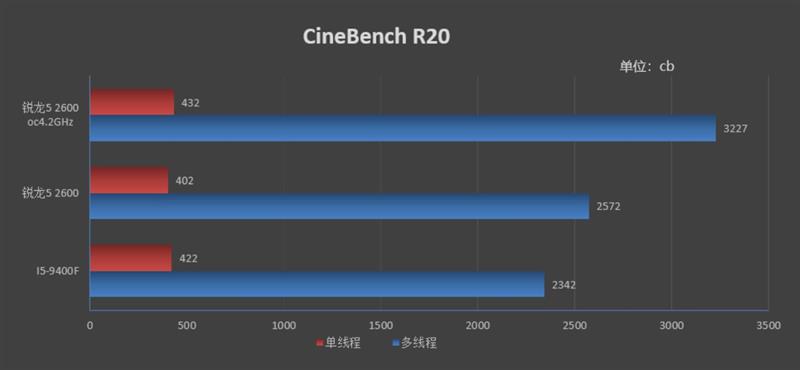 In multi-core, the differential gap is 56%.
In multi-core, the differential gap is 56%.
Note: Commissions may be earned from the links above. These scores are only an
average of the performances got with these processors, you may get different results.
CPU-Z is a system information software that provides the name of the processor, its model number, the codename, the cache levels, the package, the process. It can also gives data about the mainboard, the memory. It makes real time measurement, with finally a benchmark for the single thread, as well as for the multi thread.
| Cinebench R15 — Multi-thread & single thread score | |
|---|---|
| Intel Core i3-4005U |
68 164 |
| AMD A6-9220 |
68 110 |
In a single core, there is no noticeable difference. In multi-core, the differential gap is 49%.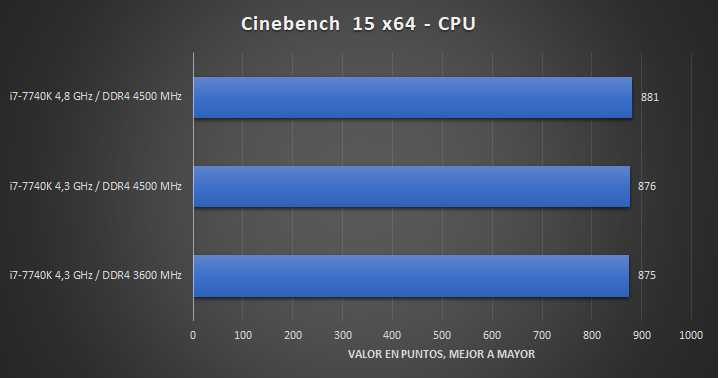
Note: Commissions may be earned from the links above. These scores are only an
average of the performances got with these processors, you may get different results.
Cinebench R15 evaluates the performance of CPU calculations by restoring a photorealistic 3D scene. The scene has 2,000 objects, 300,000 polygons, uses sharp and fuzzy reflections, bright areas, shadows, procedural shaders, antialiasing, and so on. The faster the rendering of the scene is created, the more powerful the PC is, with a high number of points.
| PassMark — CPU Mark & single thread | |
|---|---|
| Intel Core i3-4005U |
895 1.625 |
| AMD A6-9220 |
1.120 1.252 |
In single core, the difference is -20%. In multi-core, the differential gap is 30%.
Note: Commissions may be earned from the links above. These scores are only an
These scores are only an
average of the performances got with these processors, you may get different results.
PassMark is a benchmarking software that performs several performance tests including prime numbers, integers, floating point, compression, physics, extended instructions, encoding, sorting. The higher the score is, the higher is the device capacity.
On Windows 64-bit:
| Geekbench 4 — Multi-core & single core score — Windows 64-bit | |
|---|---|
| Intel Core i3-4005U |
1.904 3.571 |
| AMD A6-9220 |
1.669 2.490 |
In single core, the difference is 14%. In multi-core, the differential gap is 43%.
On Linux 64-bit:
| Geekbench 4 — Multi-core & single core score — Linux 64-bit | |
|---|---|
| Intel Core i3-4005U |
1.  811 8112.694 |
| AMD A6-9220 |
1.791 2.432 |
In single core, the difference is 1%. In multi-core, the differential gap is 11%.
On Android 64-bit:
| Geekbench 4 — Multi-core & single core score — Android 64-bit | |
|---|---|
| Intel Core i3-4005U |
2.017 3.687 |
| AMD A6-9220 |
2.081 3.127 |
In single core, the difference is -3%. In multi-core, the differential gap is 18%.
Note: Commissions may be earned from the links above. These scores are only an
average of the performances got with these processors, you may get different results.
Geekbench 4 is a complete benchmark platform with several types of tests, including data compression, images, AES encryption, SQL encoding, HTML, PDF file rendering, matrix computation, Fast Fourier Transform, 3D object simulation, photo editing, memory testing. This allows us to better visualize the respective power of these devices. For each result, we took an average of 250 values on the famous benchmark software.
This allows us to better visualize the respective power of these devices. For each result, we took an average of 250 values on the famous benchmark software.
On Windows:
| Geekbench 5 — Multi-core & single core score — Windows | |
|---|---|
| Intel Core i3-4005U |
369 869 |
| AMD A6-9220 |
339 548 |
In single core, the difference is 9%. In multi-core, the differential gap is 59%.
On Linux:
| Geekbench 5 — Multi-core & single core score — Linux | |
|---|---|
| Intel Core i3-4005U |
429 763 |
| AMD A6-9220 |
287 376 |
In single core, the difference is 49%.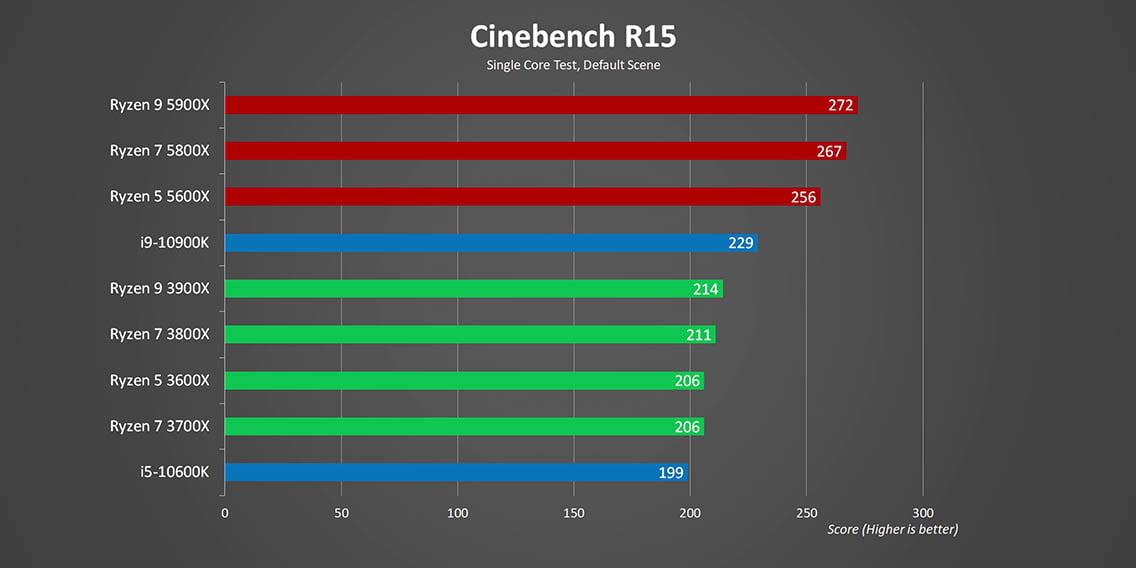 In multi-core, the differential gap is 103%.
In multi-core, the differential gap is 103%.
On Android:
| Geekbench 5 — Multi-core & single core score — Android | |
|---|---|
| Intel Core i3-4005U |
402 876 |
| AMD A6-9220 |
408 683 |
In single core, the difference is -1%. In multi-core, the differential gap is 28%.
Note: Commissions may be earned from the links above. These scores are only an
average of the performances got with these processors, you may get different results.
Geekbench 5 is a software for measuring the performance of a computer system, for fixed devices, mobile devices, servers. This platform makes it possible to better compare the power of the CPU, the computing power and to compare it with similar or totally different systems. Geekbench 5 includes new workloads that represent work tasks and applications that we can find in reality.
Equivalence:
Intel Core i3-4005U AMD equivalentAMD A6-9220 Intel equivalent
See also:
AMD A6-9220CAMD A6-9220eAMD A6-9225
Comparison AMD A6-9220 vs Intel Core i3-6100U what is better?
Home / CPU / AMD A6-9220 vs Intel Core i3-6100U
AMD A6-9220
22%
DeviceList score
vs
Intel Core i3-6100U
42%
DeviceList score
We compared the characteristics of AMD A6-9220 and Intel Core i3-6100U and compiled a list of advantages and a comparison table for you. Find out which one to choose in 2022 year.
AMD A6-9220 benefits
|
Maximum frequency |
|
2.9 GGz 0.6 GGz (26.1%) better
vs
2.3 GGz
|
|
Maximum core temperature |
|
90 °C -10 °C (-10%) better
vs
100 °C
|
|
Power Consumption (TDP) |
|
10 Wt -5 Wt (-33.
vs
15 Wt
|
Intel Core i3-6100U benefits
Winner in comparison
|
Number of threads |
|
4 2 (100%) better
vs
2
|
|
Manufacturing process technology |
|
14 nm -14 nm (-50%) better
vs
28 nm
|
|
Transistor count |
|
1750 million 550 million (45.8%) better
vs
1200 million
|
|
Passmark |
|
2621 1284 (96%) better
vs
1337
|
|
Cinebench 10 32-bit single-core |
|
3714 1282 (52.
vs
2432
|
|
Cinebench 10 32-bit multi-core |
|
8426 4485 (113.8%) better
vs
3941
|
|
Cinebench 11.5 64-bit single-core |
|
97 28 (40.6%) better
vs
69
|
|
Cinebench 15 64-bit multi-core |
|
247 135 (120.5%) better
vs
112
|
|
WinRAR 4.0 |
|
1921 1151 (149.5%) better
vs
770
|
|
x264 encoding pass 1 |
|
84 37 (78.
vs
47
|
|
x264 encoding pass 2 |
|
16 7 (77.8%) better
vs
9
|
|
3DMark06 CPU |
|
3242 989 (43.9%) better
vs
2253
|
|
Geekbench 2 |
|
5069 1608 (46.5%) better
vs
3461
|
|
Geekbench 3 32-bit single-core |
|
2191 393 (21.9%) better
vs
1798
|
|
Geekbench 3 32-bit multi-core |
|
4826 1905 (65.
vs
2921
|
|
Geekbench 4.0 64-bit single-core |
|
2861 976 (51.8%) better
vs
1885
|
|
Geekbench 4.0 64-bit multi-core |
|
5320 2515 (89.7%) better
vs
2805
|
| General information | |
|
Type |
|
|
Architecture codename |
|
| Stoney Ridge | Skylake |
|
Number of cores A large number of cores improves performance in multithreaded applications.
|
|
| 2 | 2 |
|
Number of threads More threads help the cores process information more efficiently. Real performance will be noticeable in very specific tasks (video editing, databases). |
|
| 2 | 4
2 (100%) better
|
|
Manufacturing process technology |
|
| 28 nm | 14 nm
-14 nm (-50%) better
|
|
Crystal size |
|
| 124.5 2 | 99 2 |
|
Transistor count |
|
| 1200 million | 1750 million
550 million (45.8%) better
|
|
Maximum frequency Processors with high clock speeds perform more calculations per second and thus provide better performance. |
|
| 2.9 GGz
0.6 GGz (26.1%) better
|
2.3 GGz |
|
64 bit support |
|
|
Max number of CPUs in a configuration |
|
| no data | 1 |
|
Socket |
|
| BGA | FCBGA1356 |
|
AMD-V |
|
|
Series |
|
| Bristol Ridge | Intel Core i3 |
|
Start price |
|
| no data | 281 USD |
|
Price-quality ratio The sum of all the advantages of the device divided by its price. The higher the%, the better the quality per unit price in comparison with all analogues. |
|
| no data | 74.6 % |
|
Maximum core temperature |
|
| 90 °C
-10 °C (-10%) better
|
100 °C |
|
vPro |
|
|
TXT Intel Trusted Execution Technology for hardware protection against malware. For each protected program, the processor allocates its own isolated section of RAM. |
|
|
PCI Express revision |
|
| no data | 3.0 |
|
PCI-Express line count |
|
| no data | 12 |
|
Secure Key |
|
|
MPX |
|
| no data | + |
|
Identity Protection |
|
| no data | + |
|
SGX |
|
| no data | Yes with Intel® ME |
|
OS Guard |
|
| no data | + |
|
Flex Memory Access |
|
| no data | + |
|
Quick Sync |
|
| no data | + |
|
eDP |
|
| no data | + |
|
HDMI |
|
| no data | + |
|
My WiFi |
|
| no data | + |
|
L1 Cache More threads help the cores process information more efficiently. |
|
| 160 | 128 |
|
L2 Cache |
|
| 1 | 512 |
|
L3 Cache |
|
| no data | 3 |
|
Power Consumption (TDP) The calculated heat output shows the average heat output in operation under load,
|
|
| 10 Wt
-5 Wt (-33.3%) better
|
15 Wt |
|
EDB |
|
| no data | + |
|
video memory size |
|
| no data | 32 |
|
Clear Video |
|
| no data | + |
|
InTru 3D |
|
| no data | + |
|
4K resolution support |
|
| no data | + |
|
DisplayPort |
|
| no data | + |
|
DVI |
|
| no data | + |
|
Smart Response |
|
| no data | + |
| Benchmarks | |
|
Passmark |
|
| 1337 | 2621
1284 (96%) better
|
|
Cinebench 10 32-bit single-core |
|
| 2432 | 3714
1282 (52.
|
|
Cinebench 10 32-bit multi-core |
|
| 3941 | 8426
4485 (113.8%) better
|
|
Cinebench 11.5 64-bit single-core |
|
| 69 | 97
28 (40.6%) better
|
|
Cinebench 15 64-bit multi-core |
|
| 112 | 247
135 (120.5%) better
|
|
WinRAR 4.0 |
|
| 770 | 1921
1151 (149.5%) better
|
|
x264 encoding pass 1 |
|
| 47 | 84
37 (78.7%) better
|
|
x264 encoding pass 2 |
|
| 9 | 16
7 (77.
|
|
TrueCrypt AES |
|
| 1 | 1 |
|
3DMark06 CPU |
|
| 2253 | 3242
989 (43.9%) better
|
|
Geekbench 2 |
|
| 3461 | 5069
1608 (46.5%) better
|
|
Geekbench 3 32-bit single-core |
|
| 1798 | 2191
393 (21.9%) better
|
|
Geekbench 3 32-bit multi-core |
|
| 2921 | 4826
1905 (65.2%) better
|
|
Geekbench 4.0 64-bit single-core |
|
| 1885 | 2861
976 (51.
|
|
Geekbench 4.0 64-bit multi-core |
|
| 2805 | 5320
2515 (89.7%) better
|
| Technologies and extensions | |
|
Advanced instructions |
|
| no data | Intel® SSE4.1, Intel® SSE4.2, Intel® AVX2 |
|
Turbo Boost |
|
| no data | — |
|
Idle States |
|
|
Enhanced SpeedStep (EIST) More threads help the cores process information more efficiently. Real performance will be noticeable in very specific tasks (video editing, databases). |
|
|
Thermal Monitoring |
|
|
Hyper-Threading More threads help the cores process information more efficiently. |
|
|
AES-NI More threads help the cores process information more efficiently. Real performance will be noticeable in very specific tasks (video editing, databases). |
|
| no data | + |
|
AVX The presence of AVX commands improves performance in floating-point operations and in processor-demanding
|
|
| RAM parameters | |
|
Supported memory types |
|
| no data | DDR4-2133, LPDDR3-1866, DDR3L-1600 |
|
Maximum memory size The maximum amount of RAM that can be used with this processor. |
|
| no data | 32 Gb |
|
Max memory channels |
|
| no data | 2 |
| Virtualization technologies | |
|
VT-x |
|
|
EPT |
|
|
VT-d Intel’s virtualization technology allows devices on the PCI bus to be forwarded to the guest operating system so that it can work with them using its standard tools. |
|
| Graphics specifications | |
|
maximum frequency of the graphics core |
|
| no data | 1.00 |
|
Maximum number of monitors |
|
| no data | 3 |
|
Clear Video HD |
|
|
Integrated graphics The presence of a video core allows you to use a computer without using a video card. |
|
| AMD Radeon R4 (Stoney Ridge) ( — 655 ) | + |
|
Maximum resolution via HDMI 1.4 |
|
| no data | 4096×2304@24Hz |
|
Maximum resolution via eDP |
|
| no data | 4096×2304@60Hz |
|
Maximum resolution via DisplayPort |
|
| no data | 4096×2304@60Hz |
|
DirectX |
|
| no data | 12 |
|
OpenGL |
|
| no data | 4. 5 5 |
AMD A6-9220 vs. Intel Core i3-1005G1
AMD A6-9220
The AMD A6-9220 operates with 2 cores and 2 CPU threads. It run at 2.90 GHz base 2.70 GHz all cores while the TDP is set at 15 W.The processor is attached to the FP4 CPU socket. This version includes 2.00 MB of L3 cache on one chip, supports 1 memory channels to support DDR4-2133 RAM and features 3.0 PCIe Gen 8 lanes. Tjunction keeps below 90 °C degrees C. In particular, Stoney Ridge (Excavator) Architecture is enhanced with 28 nm technology and supports AMD-V. The product was launched on Q2/2017
Intel Core i3-1005G1
The Intel Core i3-1005G1 operates with 2 cores and 2 CPU threads. It run at 3.40 GHz base 3.40 GHz all cores while the TDP is set at 15 W.The processor is attached to the BGA 1526 CPU socket. This version includes 4.00 MB of L3 cache on one chip, supports 2 memory channels to support DDR4-3200, LPDDR4-3733 RAM and features 3.0 PCIe Gen 16 lanes. Tjunction keeps below 100 °C degrees C. In particular, Ice Lake U Architecture is enhanced with 10 nm technology and supports VT-x, VT-x EPT, VT-d. The product was launched on Q3/2019
In particular, Ice Lake U Architecture is enhanced with 10 nm technology and supports VT-x, VT-x EPT, VT-d. The product was launched on Q3/2019
AMD A6-9220
Intel Core i3-1005G1
Compare Detail
| 2.50 GHz | Frequency | 1.20 GHz |
| 2 | Cores | 2 |
| 2.90 GHz | Turbo (1 Core) | 3.40 GHz |
| 2.70 GHz | Turbo (All Cores) | 3.40 GHz |
| No | Hyperthreading | Yes |
| No | Overclocking | No |
| normal | Core Architecture | normal |
|
AMD Radeon R4 (Stoney Ridge) |
GPU |
Intel UHD Graphics (Ice Lake G1) |
| No turbo | GPU (Turbo) | 0.90 GHz |
| 28 nm | Technology | 10 nm |
| No turbo | GPU (Turbo) | 0.90 GHz |
| 12 | DirectX Version | 12 |
| 3 | Max.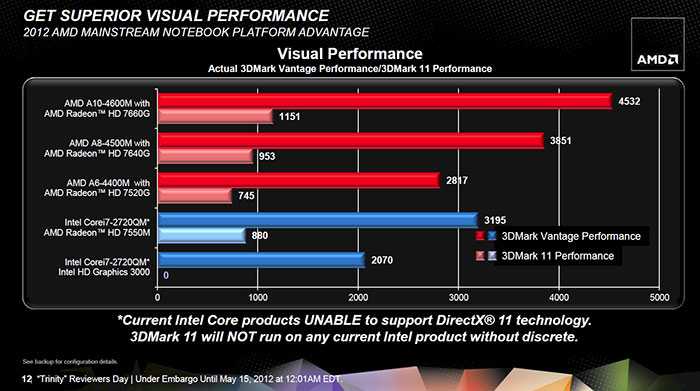 displays displays |
3 |
| DDR4-2133 | Memory | DDR4-3200 LPDDR4-3733 |
| 1 | Memory channels | 2 |
| Max memory | ||
| No | ECC | No |
| — | L2 Cache | — |
| 2.00 MB | L3 Cache | 4.00 MB |
| 3.0 | PCIe version | 3.0 |
| 8 | PCIe lanes | 16 |
| 28 nm | Technology | 10 nm |
| FP4 | Socket | BGA 1526 |
| 15 W | TDP | 15 W |
| AMD-V | Virtualization | VT-x, VT-x EPT, VT-d |
| Q2/2017 | Release date | Q3/2019 |
|
Show more data |
Show more data |
Cinebench R20 (Single-Core)
Cinebench R20 is the successor of Cinebench R15 and is also based on the Cinema 4 Suite. Cinema 4 is a worldwide used software to create 3D forms. The single-core test only uses one CPU core, the amount of cores or hyperthreading ability doesn’t count.
Cinema 4 is a worldwide used software to create 3D forms. The single-core test only uses one CPU core, the amount of cores or hyperthreading ability doesn’t count.
Cinebench R20 (Multi-Core)
Cinebench R20 is the successor of Cinebench R15 and is also based on the Cinema 4 Suite. Cinema 4 is a worldwide used software to create 3D forms. The multi-core test involves all CPU cores and taks a big advantage of hyperthreading.
Cinebench R15 (Single-Core)
Cinebench R15 is the successor of Cinebench 11.5 and is also based on the Cinema 4 Suite. Cinema 4 is a worldwide used software to create 3D forms. The single-core test only uses one CPU core, the amount of cores or hyperthreading ability doesn’t count.
Cinebench R15 (Multi-Core)
Cinebench R15 is the successor of Cinebench 11.5 and is also based on the Cinema 4 Suite. Cinema 4 is a worldwide used software to create 3D forms. The multi-core test involves all CPU cores and taks a big advantage of hyperthreading.
Geekbench 5, 64bit (Single-Core)
Geekbench 5 is a cross plattform benchmark that heavily uses the systems memory. A fast memory will push the result a lot. The single-core test only uses one CPU core, the amount of cores or hyperthreading ability doesn’t count.
Geekbench 5, 64bit (Multi-Core)
Geekbench 5 is a cross plattform benchmark that heavily uses the systems memory. A fast memory will push the result a lot. The multi-core test involves all CPU cores and taks a big advantage of hyperthreading.
iGPU — FP32 Performance (Single-precision GFLOPS)
The theoretical computing performance of the internal graphics unit of the processor with simple accuracy (32 bit) in GFLOPS. GFLOPS indicates how many billion floating point operations the iGPU can perform per second.
Estimated results for PassMark CPU Mark
Some of the CPUs listed below have been benchmarked by CPU-Comparison. However the majority of CPUs have not been tested and the results have been estimated by a CPU-Comparison’s secret proprietary formula. As such they do not accurately reflect the actual Passmark CPU mark values and are not endorsed by PassMark Software Pty Ltd.
As such they do not accurately reflect the actual Passmark CPU mark values and are not endorsed by PassMark Software Pty Ltd.
Electric Usage Estimate
Average hours of use per day
Average CPU Utilization (0-100%)
Power cost, dollar per kWh
Electric Usage Estimate
Average hours of use per day
Average CPU Utilization (0-100%)
Power cost, dollar per kWh
| AMD A6-9220 | Intel Core i3-1005G1 | |
| 15 W | Max TDP | 15 W |
| NA | Power consumption per day (kWh) | NA |
| NA | Running cost per day | NA |
| NA | Power consumption per year (kWh) | NA |
| NA | Running cost per year | NA |
Popular Comparision
Comments
AMD A6-9220C vs Intel Core i3-6006U: What is the difference?
Smartphone-graphic wire headphones
39 BALLLA
AMD A6-9220C
43 BALLLA
Intel Core i3-6006U
Winner when comparing
9000 2 6006U
Why is AMD A6-9220C better than Intel Core i3-6006U?
- GPU frequency 420MHz higher?
720MHz vs 300MHz - 0.
 5MB more L2 cache?
5MB more L2 cache?
1MB vs 0.5MB - 9W below TDP?
6W vs 15W - 32KB more L1 cache?
160KB vs 128KB - 0.25MB/core more L2 cache per core?
0.5MB/core vs 0.25MB/core
Why is Intel Core i3-6006U better than AMD A6-9220C?
- 11.11% higher CPU speed?
2 x 2GHz vs 2 x 1.8GHz - 267MHz higher RAM speed?
2133MHz vs 1866MHz - 2 more CPU threads?
4 vs 2 - 10°C higher than maximum operating temperature?
100°C vs 90°C - Semiconductor size 14nm smaller? more memory bandwidth
14nm vs 28nm - 34.1GB/s vs 13.91GB/s
- 1 more memory channels?
2 vs 1 - Uses multithreading?
What are the most popular comparisons?
AMD A6-9220C
VS
Intel Celeron N4020
Intel Core i3-6006U
VS
Intel Celeron N4020
AMD A6-0002
VS
VS
ANTEL COREL COREL -6006U
VS
Intel Core i5-6200u
AMD A6-9220C
VS
Intel Core i5-8265U
Intel Core i3-6006u
VS
5
2020 vs
AMD 3020E
Intel Core i3-6006u
VS
AMD Ryzen 3 3250u
AMD A6-9220c
VS
Intel Celeron Coler
VS 9000u 9000u 9000u 9000u 9000u 9000u 9000u 9000u 9000u 9000u 9000u 9000u 9000u 9000u 9000u 9000u 9000u 9000u 9000u 9000u 9000u 9000u 9000u 9000u 9000u 9000u 9000u 9000u 9000u 9000u 9000u 9000u 9000u 9000u 9000u 9000u 9000u 9000u 9000u 9000u 9000u 9000u 9000u 9000U -1005G1
AMD A6-9220C
VS
Intel Core i5-8250U
Intel Core i3-6006u
VS
Intel Celeron N4000
AMD A6-9220c 9000 9000.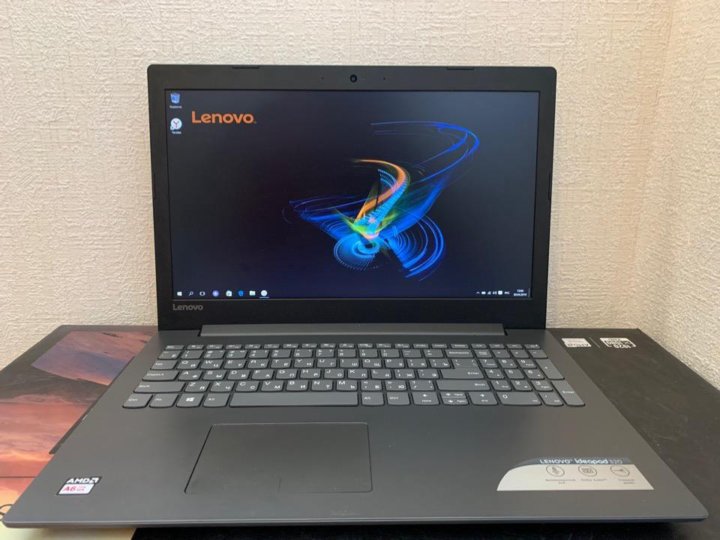 000 VS
000 VS
9000.000 VS 9000.000 VS 9000.000 VS 9000.000 VS 9000.000 VS 9000.000 VS 9000.000 VS 9000.000 VS -6006u
VS
Intel Core i3-7100U
AMD A6-9220C
VS
AMD A9-9425
Intel Core i3-6006u
VS
5
AMD A6220
vs
Intel Core i3-1115g4
Intel Core i3-6006u
VS
Intel Core i3-7020u
AMD A6-9220C
VS
A40002222
Intel Core I3-600
. Intel Core i5-4300M
Price Comparison
User Reviews
Performance
all its cores (processors). It is calculated by adding the clock speeds of each core or, in the case of multi-core processors, each group of cores.
2nd processor thread
More threads result in better performance and better multitasking.
3.speed turbo clock
2.7GHz
Unknown. Help us offer a price. (Intel Core i3-6006U)
When the processor is running below its limits, it can jump to a higher clock speed to increase performance.
4. Has an unlocked multiplier of
✖AMD A6-9220C
✖Intel Core i3-6006U
Some processors come with an unlocked multiplier and can be easily overclocked for better performance in games and other applications.
5.L2 Cache
More L2 scratchpad memory results in faster results in CPU and system performance tuning.
6.L3 cache
Unknown. Help us offer a price. (AMD A6-9220C)
More L3 scratchpad memory results in faster results in CPU and system performance tuning.
7.L1 cache
More L1 cache results in faster results in CPU and system performance tuning.
8.core L2
0.5MB/core
0.25MB/core
More data can be stored in L2 scratchpad for access by each processor core.
9.core L3
Unknown.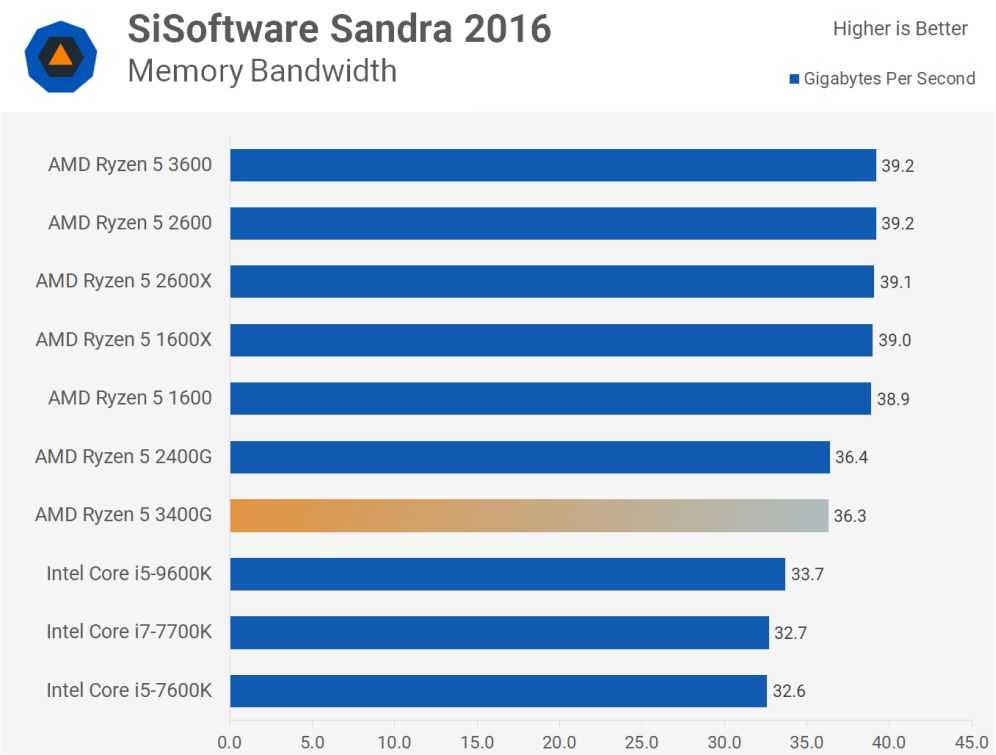 Help us offer a price. (AMD A6-9220C)
Help us offer a price. (AMD A6-9220C)
1.5MB/core
More data can be stored in the L3 scratchpad for access by each processor core.
Memory
1.RAM speed
1866MHz
2133MHz
Can support faster memory which speeds up system performance.
2.max memory bandwidth
13.91GB/s
34.1GB/s
This is the maximum rate at which data can be read from or stored in memory.
3rd DDR memory version
Unknown. Help us offer a price. (AMD A6-9220C)
DDR (Double Data Rate Synchronous Dynamic Random Access Memory) is the most common type of main memory. New versions of DDR memory support higher maximum speeds and are more energy efficient.
4.Memory channels
More memory channels increase the speed of data transfer between memory and processor.
5. max memory
max memory
Unknown. Help us offer a price. (AMD A6-9220C)
Maximum amount of memory (RAM).
6.bus baud rate
Unknown. Help us offer a price. (AMD A6-9220C)
The bus is responsible for transferring data between various components of a computer or device.
7. Supports memory debug code
✖AMD A6-9220C
✖Intel Core i3-6006U
Memory debug code can detect and repair data corruption. It is used when necessary to avoid distortion, such as in scientific computing or when starting a server.
8.eMMC version
Unknown. Help us offer a price. (AMD A6-9220C)
Unknown. Help us offer a price. (Intel Core i3-6006U)
A newer version of eMMC — built-in flash memory card — speeds up the memory interface, has a positive effect on device performance, for example, when transferring files from a computer to internal memory via USB.
9.bus frequency
Unknown. Help us offer a price. (AMD A6-9220C)
Unknown. Help us offer a price. (Intel Core i3-6006U)
The bus is responsible for transferring data between various components of a computer or device
Geotagging
1. PassMark result
Unknown. Help us offer a price. (AMD A6-9220C)
This test measures processor performance using multithreading.
2nd PassMark result (single)
Unknown. Help us offer a price. (AMD A6-9220C)
This test measures processor performance using a thread of execution.
3.Geekbench 5 result (multi-core)
Unknown. Help us offer a price. (AMD A6-9220C)
Geekbench 5 is a cross-platform benchmark that measures the performance of a multi-core processor. (Source: Primate Labs, 2022)
4. Cinebench R20 result (multi-core)
Cinebench R20 result (multi-core)
Unknown. Help us offer a price. (AMD A6-9220C)
Unknown. Help us offer a price. (Intel Core i3-6006U)
Cinebench R20 is a benchmark that measures the performance of a multi-core processor by rendering a 3D scene.
5.Cinebench R20 result (single core)
Unknown. Help us offer a price. (AMD A6-9220C)
Unknown. Help us offer a price. (Intel Core i3-6006U)
Cinebench R20 is a test to evaluate the performance of a single core processor when rendering a 3D scene.
6.Geekbench 5 result (single core)
Unknown. Help us offer a price. (AMD A6-9220C)
Geekbench 5 is a cross-platform benchmark that measures the single-core performance of a processor. (Source: Primate Labs, 2022)
7. Blender test result (bmw27)
Unknown. Help us offer a price. (AMD A6-9220C)
Unknown. Help us offer a price. (Intel Core i3-6006U)
(Intel Core i3-6006U)
The Blender benchmark (bmw27) measures CPU performance by rendering a 3D scene. More powerful processors can render a scene in a shorter time.
8.Blender result (classroom)
Unknown. Help us offer a price. (AMD A6-9220C)
Unknown. Help us offer a price. (Intel Core i3-6006U)
The Blender (classroom) benchmark measures CPU performance by rendering a 3D scene. More powerful processors can render a scene in a shorter time.
9.power per watt
Unknown. Help us offer a price. (AMD A6-9220C)
Unknown. Help us offer a price. (Intel Core i3-6006U)
This means that the processor is more efficient, giving more performance per watt of power used.
Functions
1.uses multithreading
✖AMD A6-9220C
✔Intel Core i3-6006U
processor cores into logical cores, also known as threads. Thus, each core can run two instruction streams at the same time.
Thus, each core can run two instruction streams at the same time.
2. Has AES
✔AMD A6-9220C
✔Intel Core i3-6006U
AES is used to speed up encryption and decryption.
3. Has AVX
✔AMD A6-9220C
✔Intel Core i3-6006U
AVX is used to help speed up calculations in multimedia, scientific and financial applications, and to improve the performance of the Linux RAID program.
4.Version SSE
SSE is used to speed up multimedia tasks such as editing images or adjusting audio volume. Each new version contains new instructions and improvements.
5. Has F16C
✔AMD A6-9220C
✔Intel Core i3-6006U
F16C is used to speed up tasks such as image contrast adjustment or volume control.
6.bits transmitted at the same time
Unknown. Help us offer a price. (AMD A6-9220C)
Help us offer a price. (AMD A6-9220C)
Unknown. Help us offer a price. (Intel Core i3-6006U)
NEON provides faster media processing such as MP3 listening.
7. Has MMX
✔AMD A6-9220C
✔Intel Core i3-6006U
MMX is used to speed up tasks such as adjusting image contrast or adjusting volume.
8.Has TrustZone
✖AMD A6-9220C
✖Intel Core i3-6006U
The technology is integrated into the processor to ensure device security when using features such as mobile payments and video streaming using Digital Rights Management (DRM) technology ).
9.interface width
Unknown. Help us offer a price. (AMD A6-9220C)
Unknown. Help us offer a price. (Intel Core i3-6006U)
The processor can decode more instructions per clock (IPC), which means that the processor performs better
Price comparison
Cancel
Which CPUs are better?
This page is currently only available in English.
Comparison of AMD A6-9220 and Intel Core i3-5005U
Comparative analysis of AMD A6-9220 and Intel Core i3-5005U processors by all known characteristics in the categories: General information, Performance, Memory, Graphics, Graphical interfaces, Compatibility, Peripherals, Virtualization, Image quality in graphics, Graphics API support, Security and reliability, Technology.
Analysis of processor performance by benchmarks: PassMark — Single thread mark, PassMark — CPU mark, CompuBench 1.5 Desktop — Face Detection (mPixels/s), CompuBench 1.5 Desktop — Ocean Surface Simulation (Frames/s), CompuBench 1.5 Desktop — T-Rex ( Frames/s), CompuBench 1.5 Desktop — Video Composition (Frames/s), CompuBench 1.5 Desktop — Bitcoin Mining (mHash/s), GFXBench 4.0 — Car Chase Offscreen (Frames), GFXBench 4.0 — Manhattan (Frames), GFXBench 4.0 — T-Rex (Frames), GFXBench 4.0 — Car Chase Offscreen (Fps), GFXBench 4.0 — Manhattan (Fps), GFXBench 4.0 — T-Rex (Fps), Geekbench 4 — Single Core, Geekbench 4 — Multi-Core.
AMD A6-9220
versus
Intel Core i3-5005U
Benefits
Reasons to choose AMD A6-9220
- Newer processor, release date difference Approximately 1 year(s) 4 month(s)
- L1 cache is about 25% larger, which means more data can be stored in it for quick access
- L2 cache is 2 times larger, which means more data can be stored in it for quick access
- Approximately 24% more performance in CompuBench 1.5 Desktop — Face Detection (mPixels/s): 5.922 vs 4.765
- 6.8 times greater performance in CompuBench 1.5 Desktop — Video Composition (Frames/s): 10.467 vs 1.535
- About 1% more performance in CompuBench 1.5 Desktop — Bitcoin Mining (mHash/s) benchmark: 29.364 vs 3998
- GFXBench 4.0 performance — T-Rex (Fps) approximately 1% higher: 4038 vs 3998
: 2.9 GHz vs 2 GHz
| Release date | 1 June 2016 vs 5 January 2015 |
| Maximum frequency | 2. 9 GHz vs 2 GHz 9 GHz vs 2 GHz |
| Level 1 cache | 160 KB vs 128 KB |
| Level 2 cache | 1MB vs 512KB |
| CompuBench 1.5 Desktop — Face Detection (mPixels/s) | 5.922 vs 4.765 |
| CompuBench 1.5 Desktop — Video Composition (Frames/s) | 10.467 vs 1.535 |
| CompuBench 1.5 Desktop — Bitcoin Mining (mHash/s) | 29.364 vs 12.741 |
| GFXBench 4.0 — T-Rex (Frames) | 4038 vs 3998 |
| GFXBench 4.0 — T-Rex (Fps) | 4038 vs 3998 |
Reasons to choose Intel Core i3-5005U
- 2 more threads: 4 vs 2
- Approximately 17% more maximum core temperature: 105°C vs 90°C
- Newer process technology for manufacturing the processor allows it to be more powerful, but with lower power consumption: 14 nm vs 28 nm
- About 57% better performance in PassMark — CPU mark benchmark: 2024 vs 1293
- 6.
 9 times better performance in CompuBench 1.5 Desktop — Ocean Surface Simulation (Frames/s): 33.512 vs 4.825
9 times better performance in CompuBench 1.5 Desktop — Ocean Surface Simulation (Frames/s): 33.512 vs 4.825 - 2.8x better performance in CompuBench 1.5 Desktop — T-Rex (Frames/s): 0.212 vs 0.075
- About 17% better performance in GFXBench 4.0 — Car Chase Offscreen (Frames): 866 vs 743
- About 65% more performance in GFXBench 4.0 — Manhattan (Frames) benchmark: 2531 vs 1537
- About 17% more performance in GFXBench 4.0 — Car Chase Offscreen (Fps): 866 vs 743
9002 GFXBench 4.0 — Manhattan (Fps) about 65% more: 2531 vs 1537
| Number of threads | 4 vs 2 |
| Maximum core temperature | 105°C vs 90°C |
| Process | 14 nm vs 28 nm |
| PassMark — Single thread mark | 1152 vs 1149 |
| PassMark — CPU mark | 2024 vs 1293 |
CompuBench 1.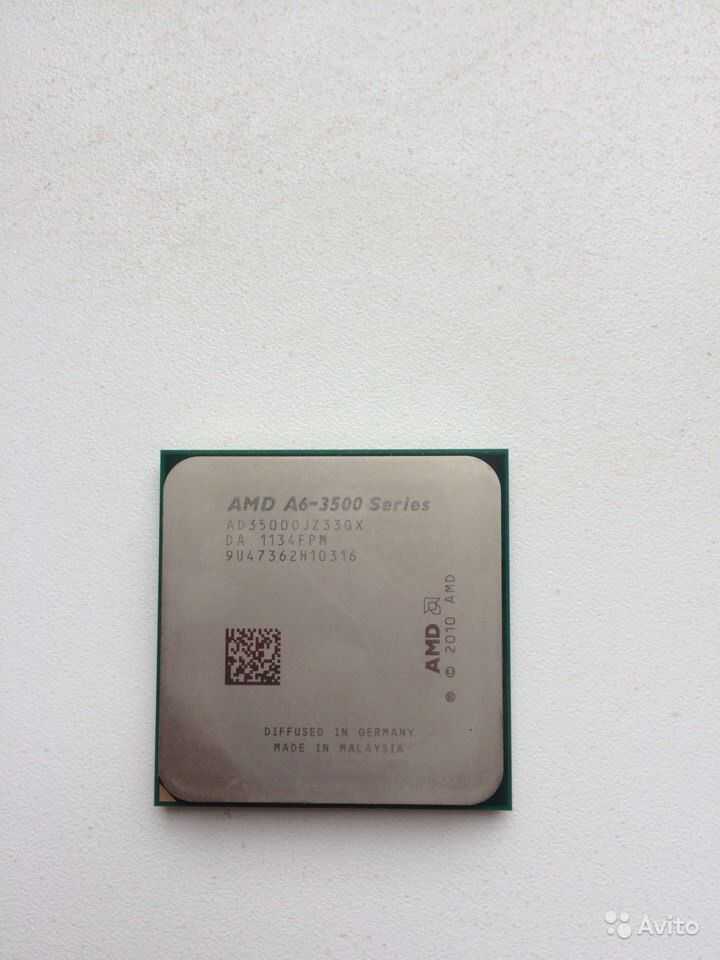 5 Desktop — Ocean Surface Simulation (Frames/s) 5 Desktop — Ocean Surface Simulation (Frames/s) |
33.512 vs 4.825 |
| CompuBench 1.5 Desktop — T-Rex (Frames/s) | 0.212 vs 0.075 |
| GFXBench 4.0 — Car Chase Offscreen (Frames) | 866 vs 743 |
| GFXBench 4.0 — Manhattan (Frames) | 2531 vs 1537 |
| GFXBench 4.0 — Car Chase Offscreen (Fps) | 866 vs 743 |
| GFXBench 4.0 — Manhattan (Fps) | 2531 vs 1537 |
Benchmark comparison
CPU 1: AMD A6-9220
CPU 2: Intel Core i3-5005U
| PassMark — Single thread mark |
|
|||||
| PassMark — CPU mark |
|
|||||
CompuBench 1. 5 Desktop — Face Detection (mPixels/s) 5 Desktop — Face Detection (mPixels/s) |
|
|||||
| CompuBench 1.5 Desktop — Ocean Surface Simulation (Frames/s) |
|
|
||||
| CompuBench 1.5 Desktop — T-Rex (Frames/s) |
|
|||||
| CompuBench 1. |
|
|
||||
| CompuBench 1.5 Desktop — Bitcoin Mining (mHash/s) |
|
|
||||
| GFXBench 4.0 — Car Chase Offscreen (Frames) |
|
|||||
| GFXBench 4. |
|
|||||
| GFXBench 4.0 — T-Rex (Frames) |
|
|||||
| GFXBench 4.0 — Car Chase Offscreen (Fps) |
|
|||||
| GFXBench 4.0 — Manhattan (Fps) |
|
|||||
| GFXBench 4. |
|
| Name | AMD A6-9220 | Intel Core i3-5005U |
|---|---|---|
| PassMark — Single thread mark | 1149 | 1152 |
| PassMark — CPU mark | 1293 | 2024 |
| CompuBench 1.5 Desktop — Face Detection (mPixels/s) | 5.922 | 4.765 |
| CompuBench 1. |
4.825 | 33.512 |
| CompuBench 1.5 Desktop — T-Rex (Frames/s) | 0.075 | 0.212 |
| CompuBench 1.5 Desktop — Video Composition (Frames/s) | 10.467 | 1.535 |
| CompuBench 1.5 Desktop — Bitcoin Mining (mHash/s) | 29.364 | 12.741 |
| GFXBench 4.0 — Car Chase Offscreen (Frames) | 743 | 866 |
| GFXBench 4.0 — Manhattan (Frames) | 1537 | 2531 |
| GFXBench 4. |
4038 | 3998 |
| GFXBench 4.0 — Car Chase Offscreen (Fps) | 743 | 866 |
| GFXBench 4.0 — Manhattan (Fps) | 1537 | 2531 |
| GFXBench 4.0 — T-Rex (Fps) | 4038 | 3998 |
| Geekbench 4 — Single Core | 452 | |
| Geekbench 4 — Multi-Core | 997 |
Feature comparison
| AMD A6-9220 | Intel Core i3-5005U | |
|---|---|---|
| Architecture name | Stoney Ridge | Broadwell |
| Family | AMD A-Series Processors | |
| Production date | June 1, 2016 | January 5, 2015 |
| OPN Tray | AM9220AYN23AC | |
| OS Support | Windows 10 — 64-Bit Edition, RHEL x86 64-Bit, Ubuntu x86 64-Bit | |
| Place in the ranking | 1393 | 1451 |
| Series | AMD A6-Series APU for Laptops | 5th Generation Intel® Core™ i3 Processors |
| Applicability | Laptop | Mobile |
| Price at first issue date | $275 | |
| Processor Number | i3-5005U | |
| Status | Launched | |
| Support 64 bit | ||
| Base frequency | 2. |
2.00 GHz |
| Compute Cores | 5 | |
| Crystal area | 124.5mm | 82mm |
| Level 1 cache | 160KB | 128KB |
| Level 2 cache | 1MB | 512KB |
| Process | 28nm | 14nm |
| Maximum core temperature | 90°C | 105°C |
| Maximum frequency | 2. |
2 GHz |
| Number of cores | 2 | 2 |
| Number of GPU cores | 3 | |
| Number of threads | 2 | 4 |
| Number of transistors | 1200 Million | 1300 Million |
| Unlocked | ||
| Bus Speed | 5 GT/s DMI2 | |
| Level 3 cache | 3MB | |
| Maximum case temperature (TCase) | 105 °C | |
| Maximum number of memory channels | 1 | 2 |
| Maximum memory bandwidth | 17. |
25.6 GB/s |
| Supported memory frequency | 2133MHz | |
| Supported memory types | DDR4 | DDR3L 1333/1600 LPDDR 1333/1600 |
| Maximum memory size | 16GB | |
| Maximum GPU clock | 655MHz | 850 MHz |
| Number of iGPU cores | 3 | |
| Integrated graphics | AMD Radeon R5 Graphics | Intel® HD Graphics 5500 |
| Device ID | 0x1616 | |
| Graphics base frequency | 300MHz | |
| Graphics max dynamic frequency | 850 MHz | |
| Intel® Clear Video HD Technology | ||
| Intel® Clear Video Technology | ||
| Intel® Flexible Display Interface (Intel® FDI) | ||
| Intel® InTru™ 3D Technology | ||
| Intel® Quick Sync Video | ||
| Video memory size | 16GB | |
| DisplayPort | ||
| HDMI | ||
| eDP | ||
| Maximum number of monitors supported | 3 | |
| WiDi support | ||
| Configurable TDP | 10-15 Watt | |
| Supported sockets | FP4 BGA | FCBGA1168 |
| Power consumption (TDP) | 15 Watt | 15 Watt |
| Configurable TDP-down | 10W | |
| Configurable TDP-down Frequency | 600MHz | |
| Low Halogen Options Available | ||
| Maximum number of processors in | 1 | |
| Package Size | 40mm x 24mmx 1. |
|
| PCI Express revision | 3.0 | 2.0 |
| Number of PCI Express lanes | 12 | |
| PCIe configurations | 4×1 2×4 | |
| AMD Virtualization (AMD-V™) | ||
| Intel® Virtualization Technology (VT-x) | ||
| Intel® Virtualization Technology for Directed I/O (VT-d) | ||
| Intel® VT-x with Extended Page Tables (EPT) | ||
| Maximum resolution via DisplayPort | [email protected] | |
| Maximum resolution via HDMI 1. |
[email protected] | |
| Maximum resolution via VGA | N/A | |
| DirectX | 11.2/12 | |
| OpenGL | 4.3 | |
| Execute Disable Bit (EDB) | ||
| Intel® Identity Protection Technology | ||
| Intel® OS Guard | ||
| Intel® Secure Key Technology | ||
| Intel® Trusted Execution Technology (TXT) | ||
| Enhanced Intel SpeedStep® Technology | ||
| Flexible Display interface (FDI) | ||
| Idle States | ||
| Extended instructions | Intel® SSE4. |
|
| Intel 64 | ||
| Intel® Advanced Vector Extensions (AVX) | ||
| Intel® AES New Instructions | ||
| Intel® Fast Memory Access | ||
| Intel® Flex Memory Access | ||
| Intel® Hyper-Threading Technology | ||
| Intel® Smart Response Technology | ||
| Intel® Stable Image Platform Program (SIPP) | ||
| Intel® TSX-NI | ||
| Intel® Turbo Boost Technology | ||
| Intel® vPro™ Platform Eligibility | ||
| Thermal Monitoring |
AMD A6-9220 — processor overview.
Benchmarks and Specs
The AMD A6-9220 processor is based on a 28 nm process and the Stoney Ridge (Excavator) architecture. The base clock is 2.50 GHz and the maximum turbo clock is 2.90 GHz. AMD A6-9220 contains 2 processor cores. To make the right choice for upgrading your computer, check out the detailed specifications and test results. Please check your motherboard socket compatibility before choosing.
3.3
From 6
Hitesti Score
TOP 10 processors
Most popular on the site
Intel Celeron N4020
2x 1.10 GHz (2. 80 GHz)
AMD Ryzen 5 5500U
6x 2.10 GHz (4.00 GHz) HT
Intel Celeron J4125
4x 2.00 GHz (2.70 GHz)
AMD Ryzen 3 3250U
2x 2.60 GHz (3.50 GHz) HT
AMD Ryzen 7 5700U
8x 1. 80 GHz (4.30 GHz) HT
AMD Athlon Silver 3050U
2x 2.30 GHz (3.20 GHz)
Intel Core i3-1115G4
2x 1.70 GHz (4.10 GHz) HT
Intel Core i5-1135G7
4x 2.40 GHz (4.00 GHz) HT
AMD Ryzen 5 4600G
6x 3. 70 GHz (4.20 GHz) HT
Intel Celeron N4500
2x 1.10 GHz (2.90 GHz)
Buy here:
AliExpress
General information
AMD A6-9220 base and maximum clock speed, number of processor cores and threads. The more the better (marked in green).
CPU cores, base and turbo speeds
The overall performance of a processor can be easily determined based on its number of cores and threads, as well as its standard and turbo clock speeds. The more GHz, cores and L2-L3 cache a processor has, the better. Please note that high specs require a powerful cooling system and a quality chipset (check the VRM on the motherboard).
| Clock frequency: | 2.50 GHz | Number of cores: | 2 | |
| Turbo (1 core): | 2.90 GHz | Number of threads: | 2 | |
| Turbo (2 Cores): | 2. |
Hyper trading: | No. | |
| Acceleration: | No. |
Internal graphics
Some manufacturers (most often Intel) supplement processors with graphics chips, this solution is especially popular in laptops, but is ineffective in workstations and gaming stations. The higher the clock speed of the video card and the more memory on board, the better.
| GPU name: | AMD Radeon R4 (Stoney Ridge) | |||
| GPU frequency: | 0.66 GHz | GPU (Turbo): | No turbo | |
| Generation: | 7 | DirectX version: | 12 | |
| Execution units: | 3 | Number of shaders: | 192 | |
| Maximum memory: | 2GB | Number of monitors: | 3 | |
| Technology: | 28nm | Release date: | Q2/2016 | |
Hardware codec support
Here we are dealing with specifications that are used by some processor manufacturers. These figures are mostly technical and can be disregarded for comparative purposes.
| h364: | Decode | |||
| JPEG: | Decode/Encode | |||
| h365 8bit: | Decode | |||
| h365 10bit: | Decode | |||
| VP8: | Decode | |||
| VP9: | Decode | |||
| VC-1: | Decode | |||
| AVC: | Decode/Encode | |||
RAM and PCIe
These are the memory standards supported by processors. The higher the standard and clock frequency with the amount of RAM, the better the performance and speed of the processor. It is also worth considering the possibility of memory operation in multichannel mode.
| Memory type: | DDR4-2133 | Maximum memory: | 8GB | |
| Memory channels: | 1 | ECC: | No. |
|
| PCIe version: | 3.0 | PCIe lanes: | 8 |
Encryption
Data encryption support
| AES-NI: | Yes |
Thermal management and TDP
| TDP: | 15W | Maximum temperature: | 90 °C | |
| Max TDP: | — | TDP down: | 10W |
Technical details
These are key parameters that will help you determine which processor is better. Pay special attention to the release date, the technological aspects of the manufacturing process (measured in nanometers) and the third level (L3) cache.
| L3-Cache: | 2.00 MB | Technology: | 28nm | |
| Architecture: | Stoney Ridge (Excavator) | Virtualization: | AMD-V, AMD-Vi | |
| Socket: | FP4 | Release date: | Q2/2017 |
Devices compatible with this processor
You probably already know which devices use processors. It can be a desktop computer or a laptop.
| Used in: | Unknown | |||
The latter is used to create 3D models and shapes. Cinebench R15 is used to benchmark the performance of single core processors. Hyperthreading capability is not taken into account. It is an updated version of Cinebench 11.5. Like all new versions, the updated benchmark is based on Cinema 4 Suite
software
Intel Celeron 3865U
2x 1.80 GHz (No turbo)
Intel Celeron N4000
2x 1. 10 GHz (2.60 GHz)
AMD A6-9220
2x 2.50 GHz (2.90 GHz)
Intel Pentium 3558U
2x 1.70 GHz (No turbo)
Intel Celeron 3855U
2x 1.60 GHz (No turbo)
Cinebench R15 can be used to test the performance of multi-core processors. The test produces accurate and reliable results. This benchmark is an updated version of Cinebench 11.5, which is based on Cinema 4 Suite soft.
Intel Core i3-4010Y
2x 1.30 GHz (No turbo) HT
Intel Celeron N29thirty
4x 1.83 GHz (2.16 GHz)
AMD A6-9220
2x 2. 50 GHz (2.90 GHz)
Intel Atom x5-Z8300
4x 1.44 GHz (1.84 GHz)
Intel Celeron 2957U
2x 1.40 GHz (No turbo)
It tests all and general CPU performance (math calculations, compression and decompression speed, 2D&3D graphics tests). Please note that data may differ from actual situations.
Intel Celeron G530
2x 2. 40 GHz (No turbo)
AMD A4-6210
4x 1.80 GHz (No turbo)
AMD A6-9220
2x 2.50 GHz (2.90 GHz)
AMD A4-5050
4x 1.55 GHz (No turbo)
AMD Phenom II X2 560
2x 3. 30 GHz (No turbo)
This test measures the performance of integrated graphics on Intel and AMD processors. The result is the calculated processing power in Single-Precision mode FP32
AMD A6-3410MX
4x 1.60 GHz (2.30 GHz)
AMD A6-3400M
4x 1.40 GHz (2.30 GHz)
AMD A6-9220
2x 2. 50 GHz (2.90 GHz)
Intel Core i7-2960XM
4x 2.70 GHz (3.70 GHz) HT
Intel Core i7-2920XM
4x 2.50 GHz (3.50 GHz) HT
3.3
From 6
Hitesti Score
Share on social networks:
In order to leave a review, you need to login
Review AMD A6-9220
Compare AMD A6-9220
VS
Intel Core i3-3225
Intel Pentium 2117U
AMD Ryzen Embedded R1505G
Intel Core i9-10900KF
AMD Ryzen Embedded V1404I
AMD A8-7650K
AMD Ryzen 7 4800H
AMD A10-5757M
AMD A10-5750M
AMD A10-5700
Comparison AMD A6-9220 vs Intel Core i3-7100T which is better?
Home / Processor / AMD A6-9220 VS Intel Core i3-7100t
AMD A6-9220
22%
Devicelist
VS
Intel Core i3-7100T
9000 2
DEVICELIST 9000 We compared the specifications of AMD A6-9220 and Intel Core i3-7100T and compiled a list of advantages and a comparison table for you. Find out which one to choose in 2022.
Advantage AMD A6-9220
|
Maximum core temperature |
|
90°C -2 °C (-2.2%) better than vs 92 °C |
|
Power Demand (TDP) |
|
10 W -25 W (-71.4%) better than vs 35 W |
Benefits of Intel Core i3-7100T
Comparison winner
|
threads |
|
4 2 (100%) better than vs 2 |
|
Maximum frequency |
|
3.4 GHz At 0.5 GHz (17.2%) better than vs 2.9 GHz |
|
Process |
|
14 nm -14 nm (-50%) better than vs 28 nm |
|
Passmark |
|
3716 2379 (177. vs 1337 |
| General information | |
|
Type |
|
| For laptops | Desktop |
|
Architecture code name |
|
| Stoney Ridge | Kaby Lake |
|
Cores A large number of cores improves performance in multi-threaded applications. |
|
| 2 | 2 |
|
Threads More threads help the cores process information more efficiently. Real performance will be noticeable in very specific tasks (video editing, databases). |
|
| 2 | 4
2 (100%) better than |
|
Base frequency |
|
| n/a | 3. |
|
Process |
|
| 28 nm | 14 nm
-14 nm (-50%) better than |
|
Chip size |
|
| 124.5 mm2 | n/a |
|
Number of transistors |
|
| 1200 million | n/a |
|
Maximum frequency Faster clocked processors perform more calculations per second and thus provide better performance. |
|
| 2.9GHz | 3.4 GHz
Better than at 0.5 GHz (17.2%) |
|
Support 64 bit |
|
|
Max. number of processors in configuration |
|
| n/a | 1 |
|
Socket |
|
| BGA | FCLGA1151 |
|
AMD-V |
|
|
Series |
|
| Bristol Ridge | Intel Core i3 |
|
Release price |
|
| n/a | 117 $ |
|
Value for money The sum of all the advantages of the device divided by its price. |
|
| n/a | 58.5% |
|
Tire |
|
| n/a | 8 GT/s |
|
Maximum core temperature |
|
| 90 °C
-2 °C (-2.2%) better than |
92 °C |
|
vPro |
|
|
TXT Intel Trusted Execution Technology for hardware-based malware protection. For each protected program, the processor allocates its own isolated section of RAM. |
|
|
PCI Express revision |
|
| n/a | 3.0 |
|
Number of PCI-Express lanes |
|
| n/a | 16 |
|
Secure Key |
|
|
MPX |
|
| n/a | + |
|
Identity Protection |
|
| n/a | + |
|
SGX |
|
| n/a | Yes with Intel® ME |
|
OS Guard |
|
| n/a | + |
|
Quick Sync |
|
| n/a | + |
|
Level 1 Cache The fastest level of cache that works directly with the core. |
|
| 160 Kb | 64K (per core) |
|
Level 2 cache |
|
| 1 Mb | 256K (per core) |
|
Level 3 cache |
|
| n/a | 3 MB (total) |
|
Maximum case temperature (TCase) |
|
| n/a | 65 °C |
|
Power Demand (TDP) The calculated heat output shows the average heat dissipation in load operation, |
|
| 10W
-25 W (-71.4%) better than |
35 W |
|
EDB |
|
| n/a | + |
|
Video memory size |
|
| n/a | 64 GB |
|
Clear Video |
|
| n/a | + |
|
InTru 3D |
|
| n/a | + |
|
4K support |
|
| n/a | + |
| 3716
2379 (177. |
||
|
Cinebench 10 32-bit single-core |
||
| 2432 | n/a | |
|
Cinebench 10 32-bit multi-core |
||
| 3941 | n/a | |
|
Cinebench 11.5 64-bit single-core |
||
| 69 | n/a | |
|
Cinebench 15 64-bit multi-core |
||
| 112 | n/a | |
|
WinRAR 4.0 |
||
| 770 | n/a | |
|
x264 encoding pass 1 |
||
| 47 | n/a | |
|
x264 encoding pass 2 |
||
| 9 | n/a | |
|
TrueCrypt AES |
||
| 1 | n/a | |
|
3DMark06 CPU |
||
| 2253 | n/a | |
|
Geekbench 2 |
||
| 3461 | n/a | |
|
Geekbench 3 32-bit single-core |
||
| 1798 | n/a | |
|
Geekbench 3 32-bit multi-core |
||
| 2921 | n/a | |
|
Geekbench 4. |
||
| 1885 | no data | |
|
Geekbench 4.0 64-bit multi-core |
||
| 2805 | n/a | |
| Technology and additional instructions | |
|
Extended instructions |
|
| n/a | Intel® SSE4.1, Intel® SSE4.2, Intel® AVX2 |
|
Turbo Boost |
|
| n/a | — |
|
Idle States |
|
|
Enhanced SpeedStep (EIST) Technology from Intel that allows you to reduce the frequency of the processor to a minimum value to save power when the processor is idle. |
|
|
Thermal Monitoring |
|
|
Hyper-Threading Hardware technology from Intel that allows multiple threads to be processed on each processor core. |
|
|
AES-NI Technology from Intel that speeds up the AES encryption process. |
|
| n/a | + |
|
AVX The presence of AVX instructions improves performance in floating point and processor-intensive operations |
|
| RAM parameters | |
|
RAM types |
|
| n/a | DDR4-2133, DDR4-2400, DDR3L-1333, DDR3L-1600 |
|
Allowable memory The maximum amount of RAM that can be used with this processor. |
|
| n/a | 64 GB |
|
Number of memory channels |
|
| n/a | 2 |
|
ECC memory support EEC memory is designed specifically for systems with high requirements for data processing reliability. |
|
| Virtualization technologies | ||
|
EPT |
||
|
VT-d Intel virtualization technology allows you to forward devices on the PCI bus to the guest operating system so that it can work with them using its standard tools. |
||
| Integrated graphics | ||
| 1.10 GHz | ||
|
Maximum number of monitors |
||
| n/a | 3 | |
|
Clear Video HD |
||
|
Video core The presence of the video core allows you to use your computer without using a video card. | ||

 3%) better
3%) better 7%) better
7%) better 2%) better
2%) better

 Real performance will be noticeable in very specific tasks (video editing, databases).
Real performance will be noticeable in very specific tasks (video editing, databases). 7%) better
7%) better 8%) better
8%) better 8%) better
8%) better Real performance will be noticeable in very specific tasks (video editing, databases).
Real performance will be noticeable in very specific tasks (video editing, databases).